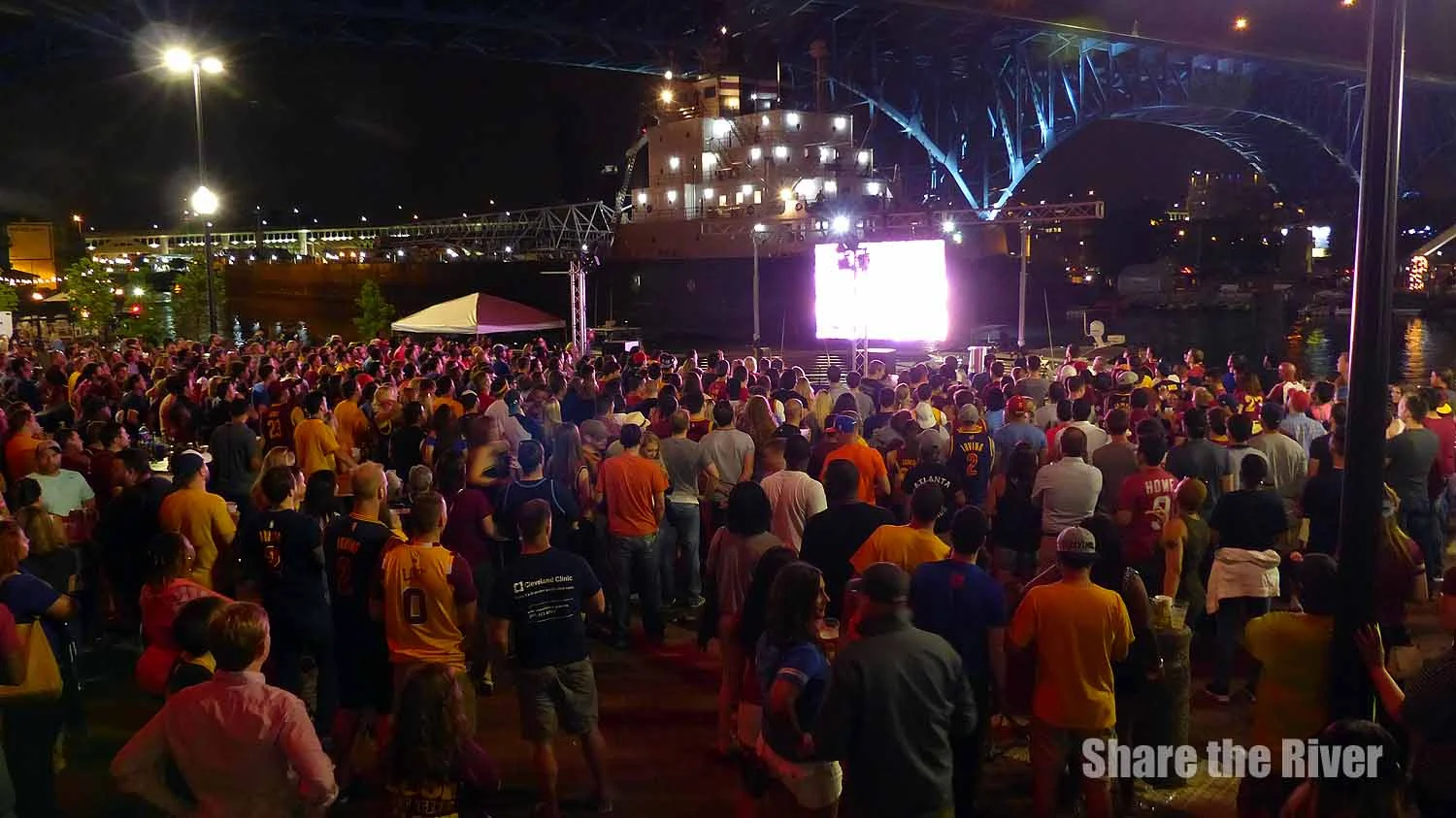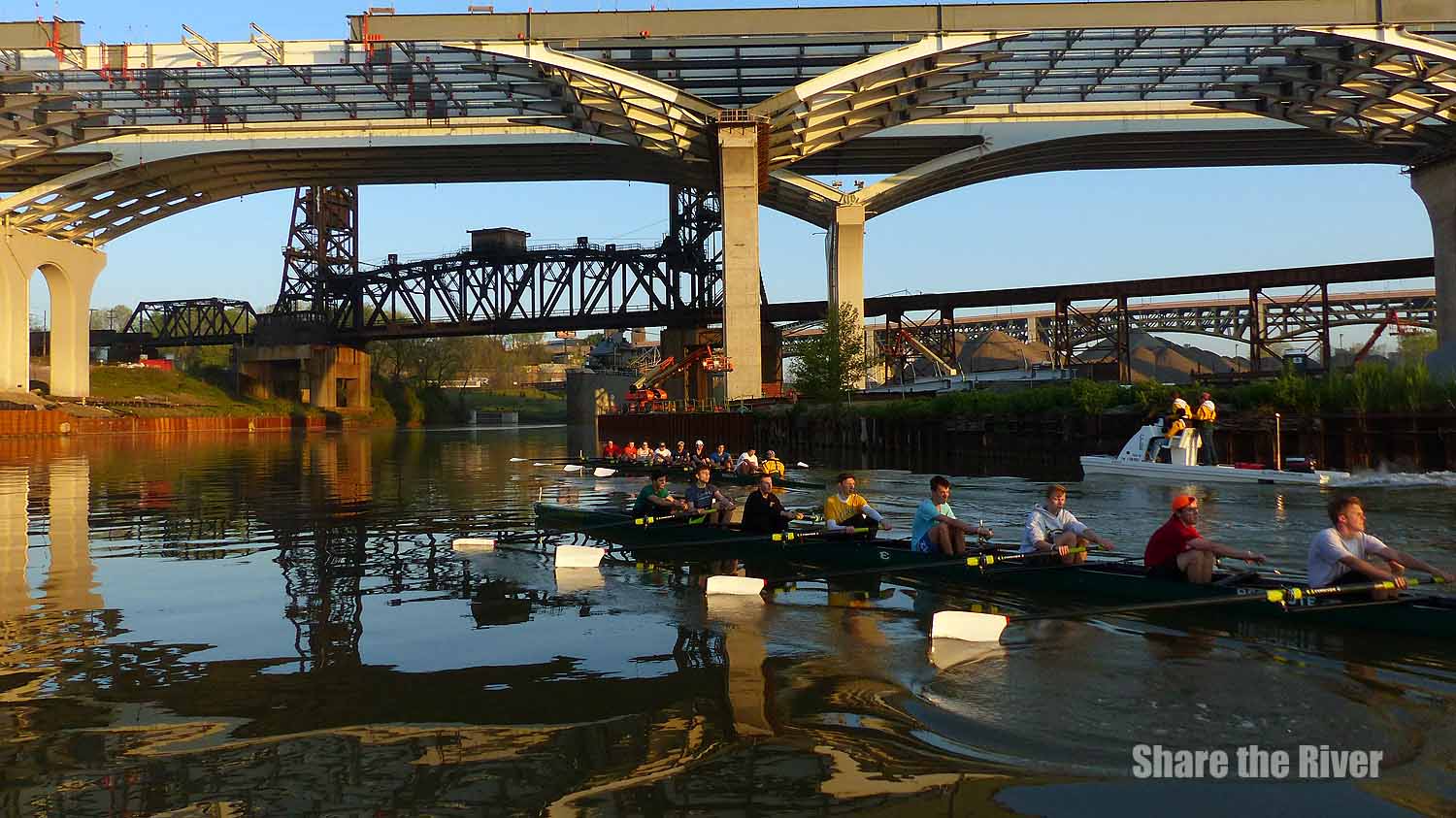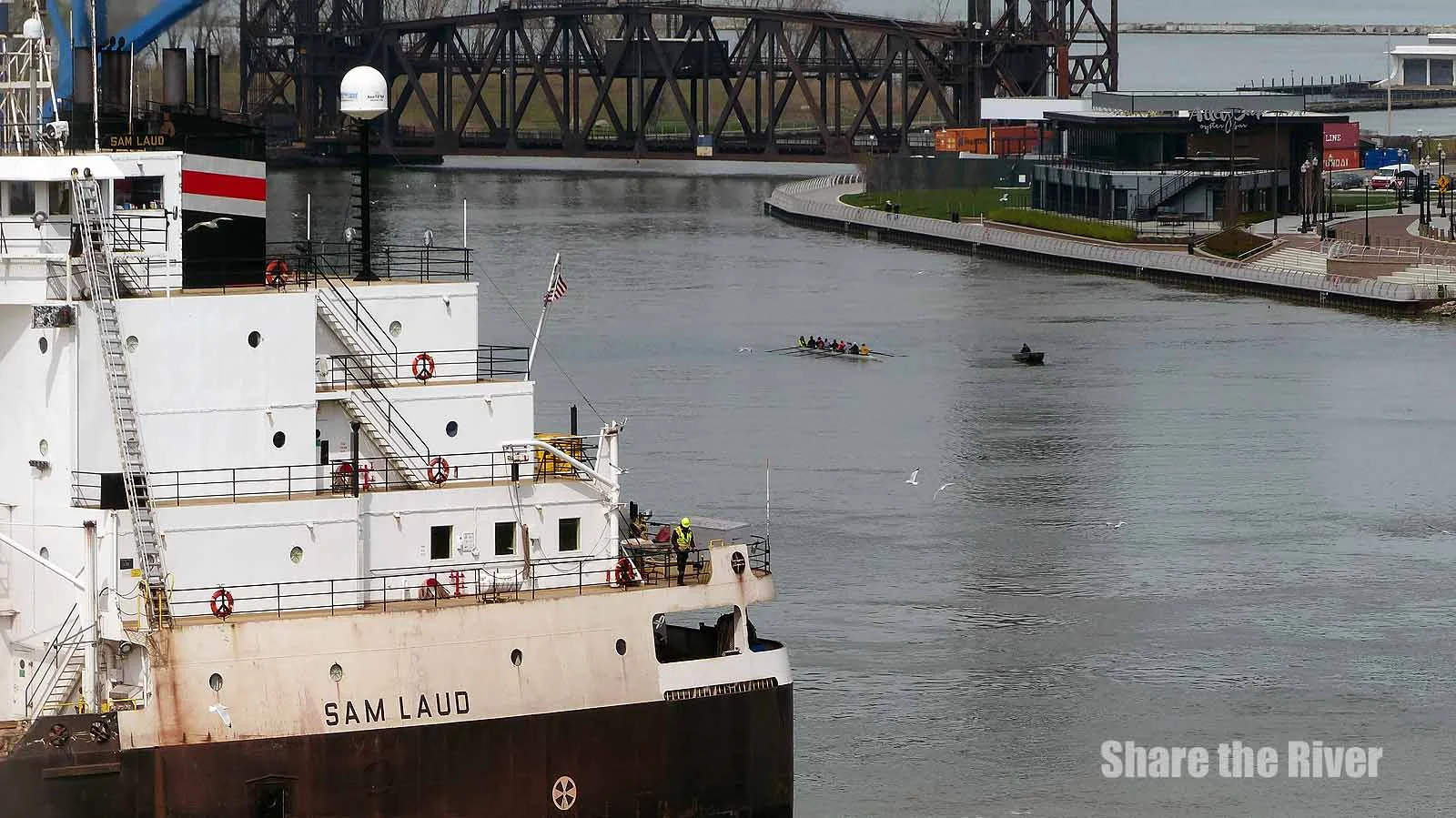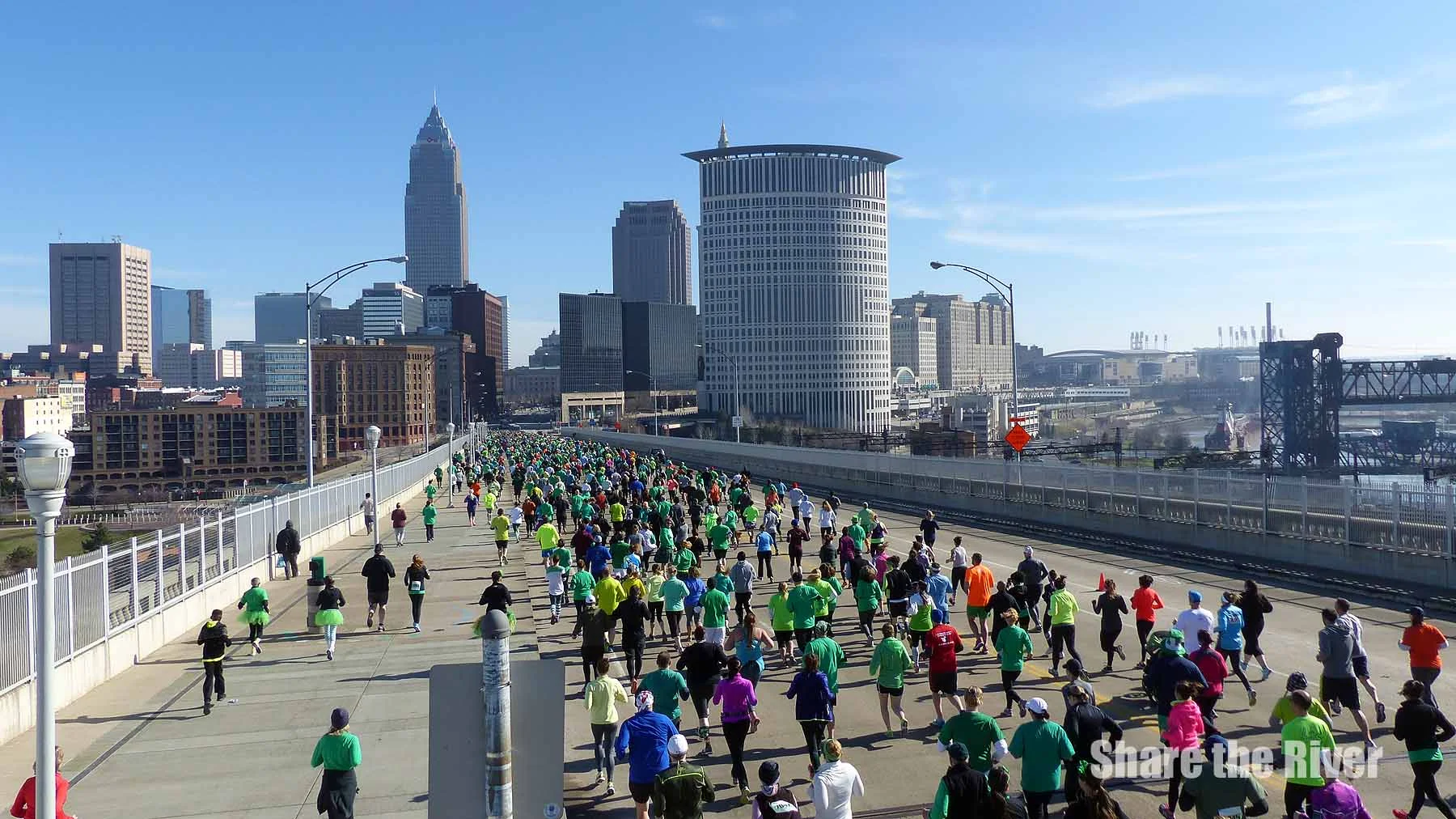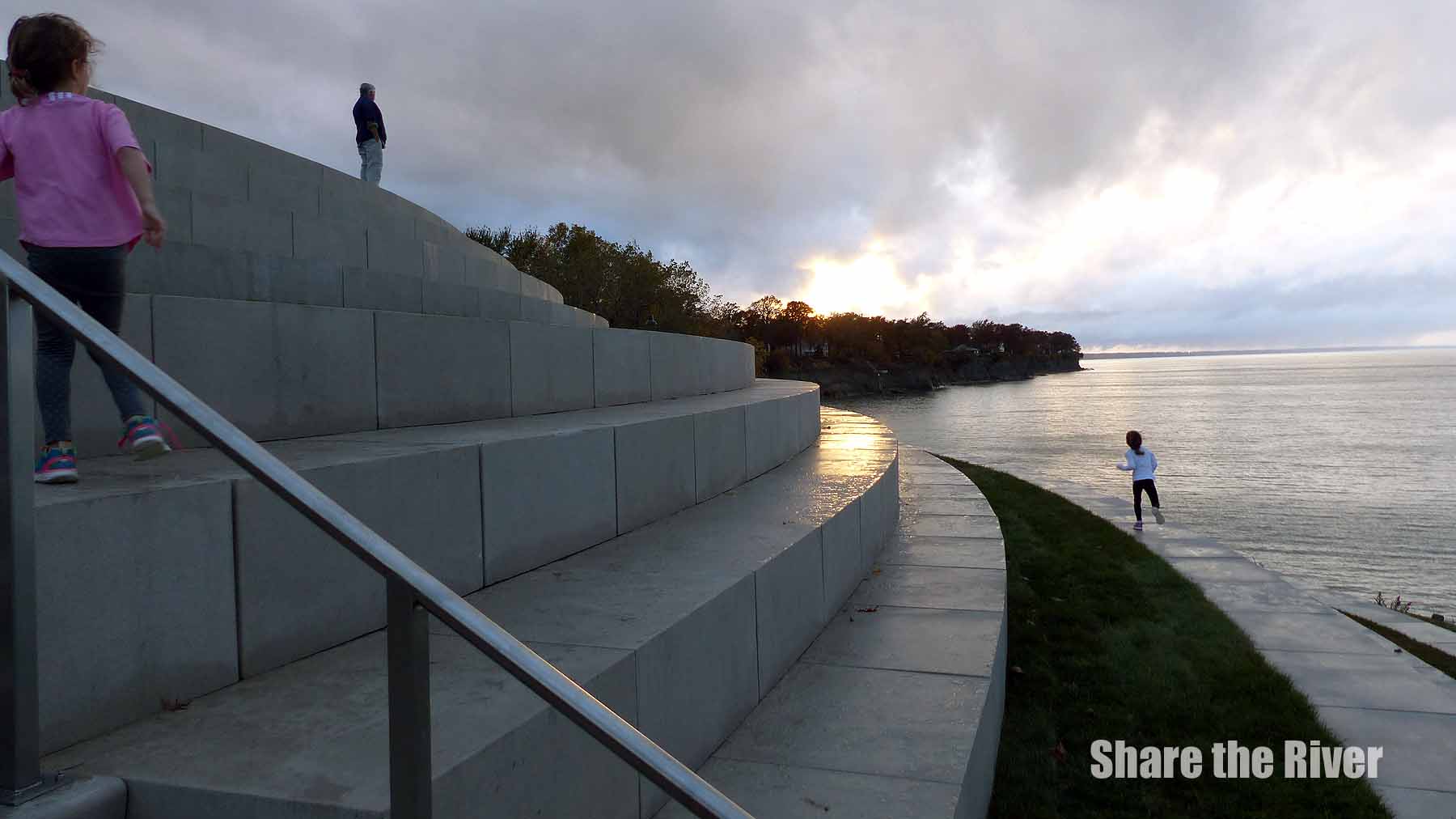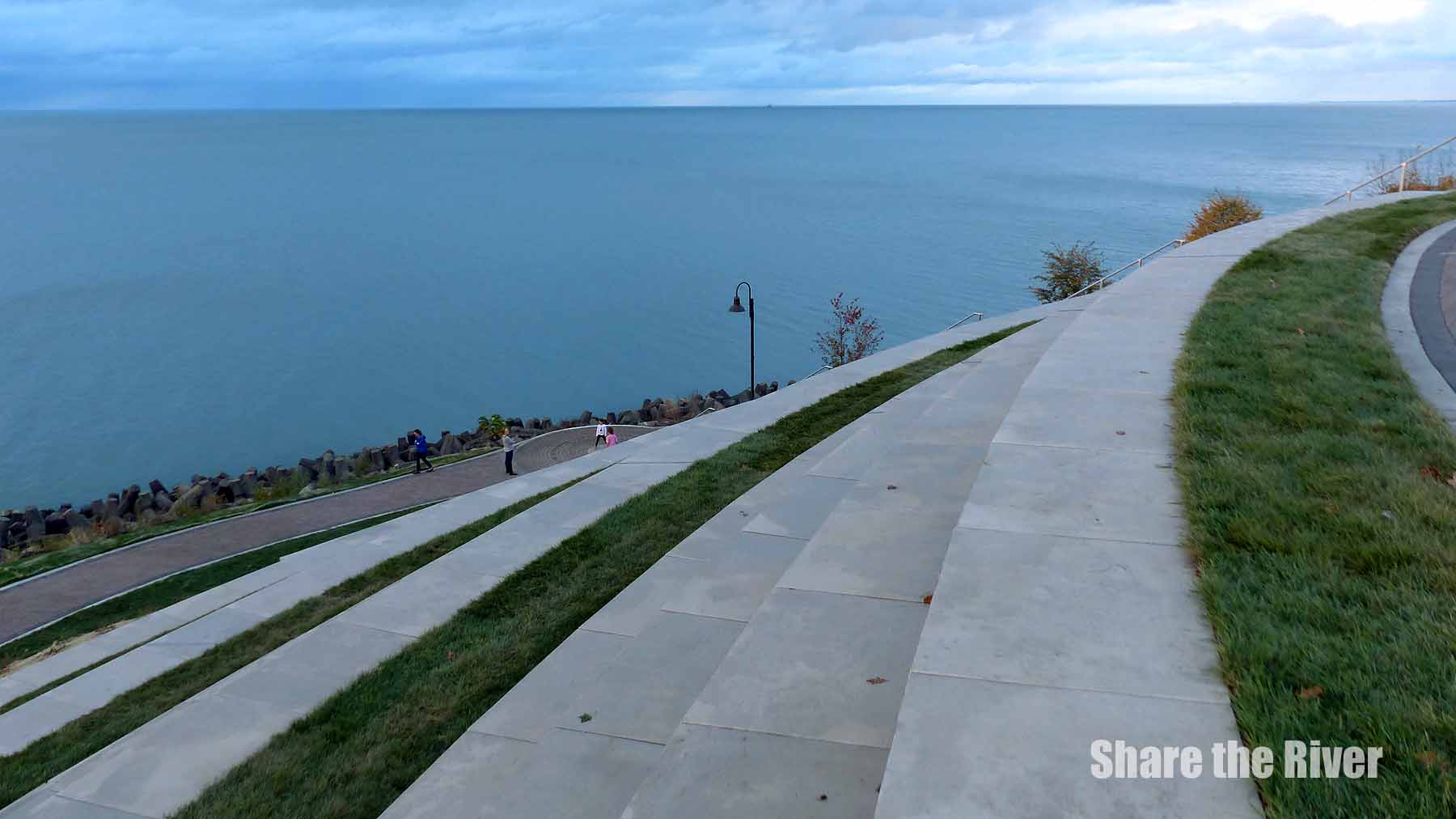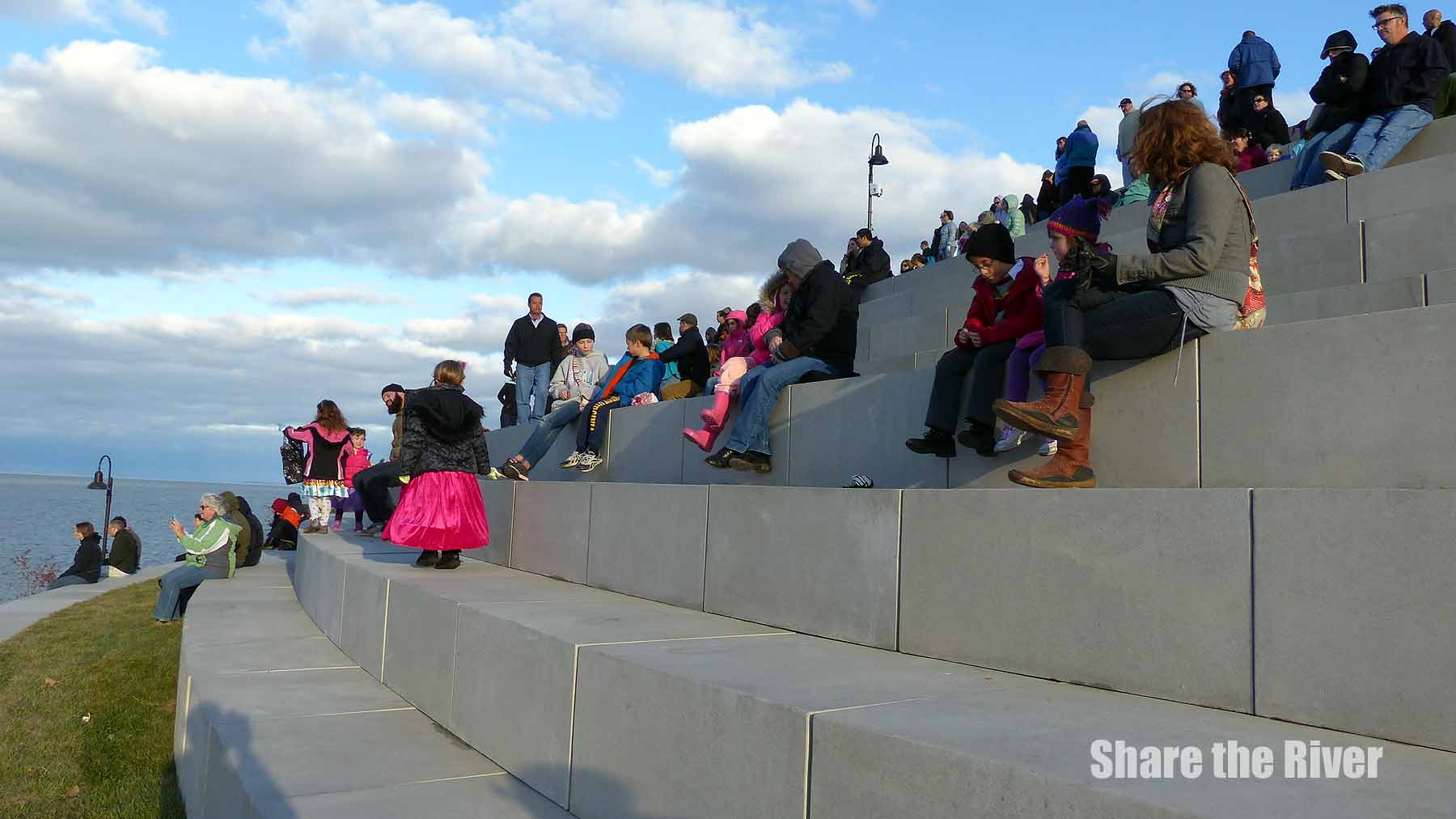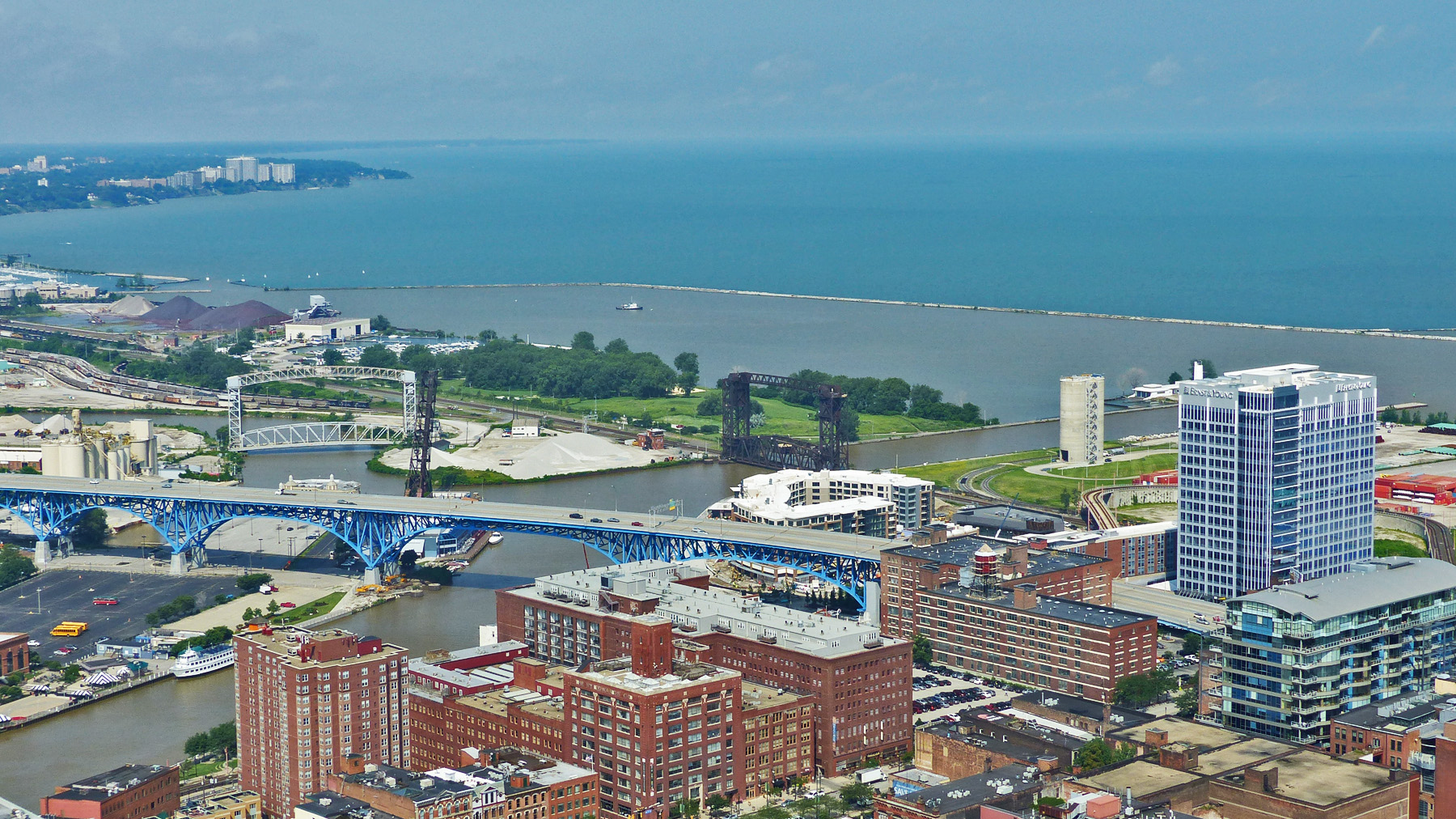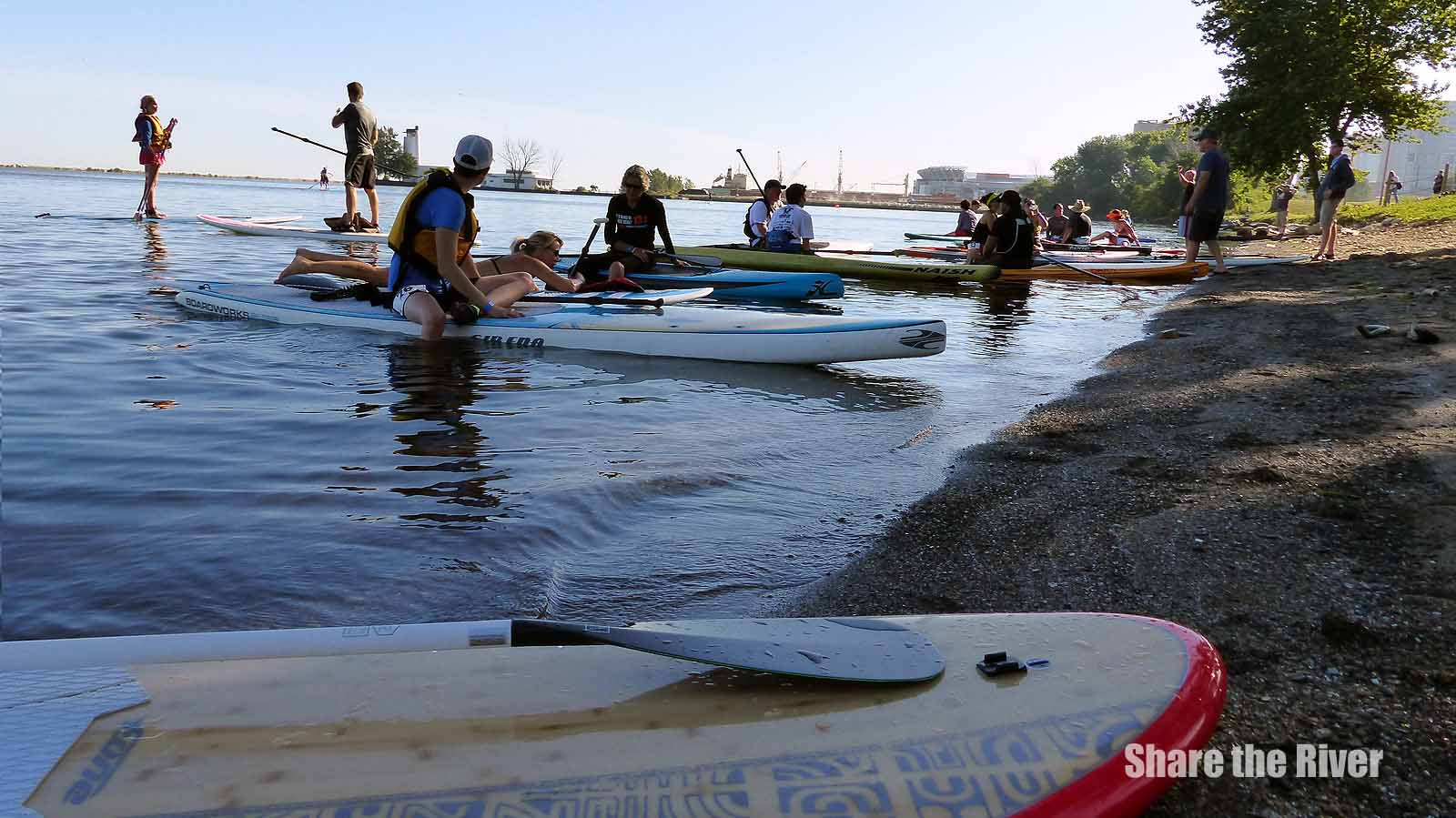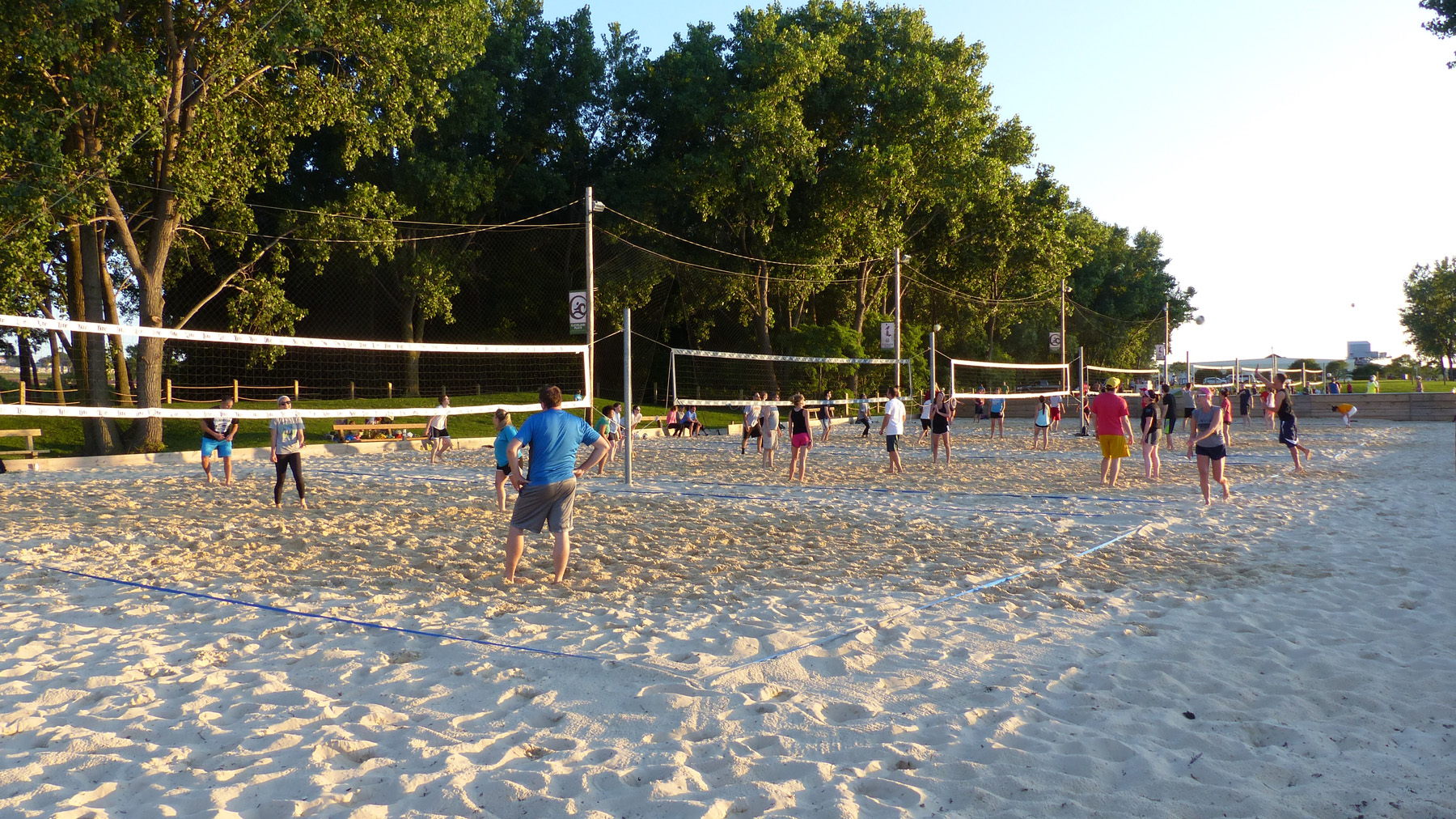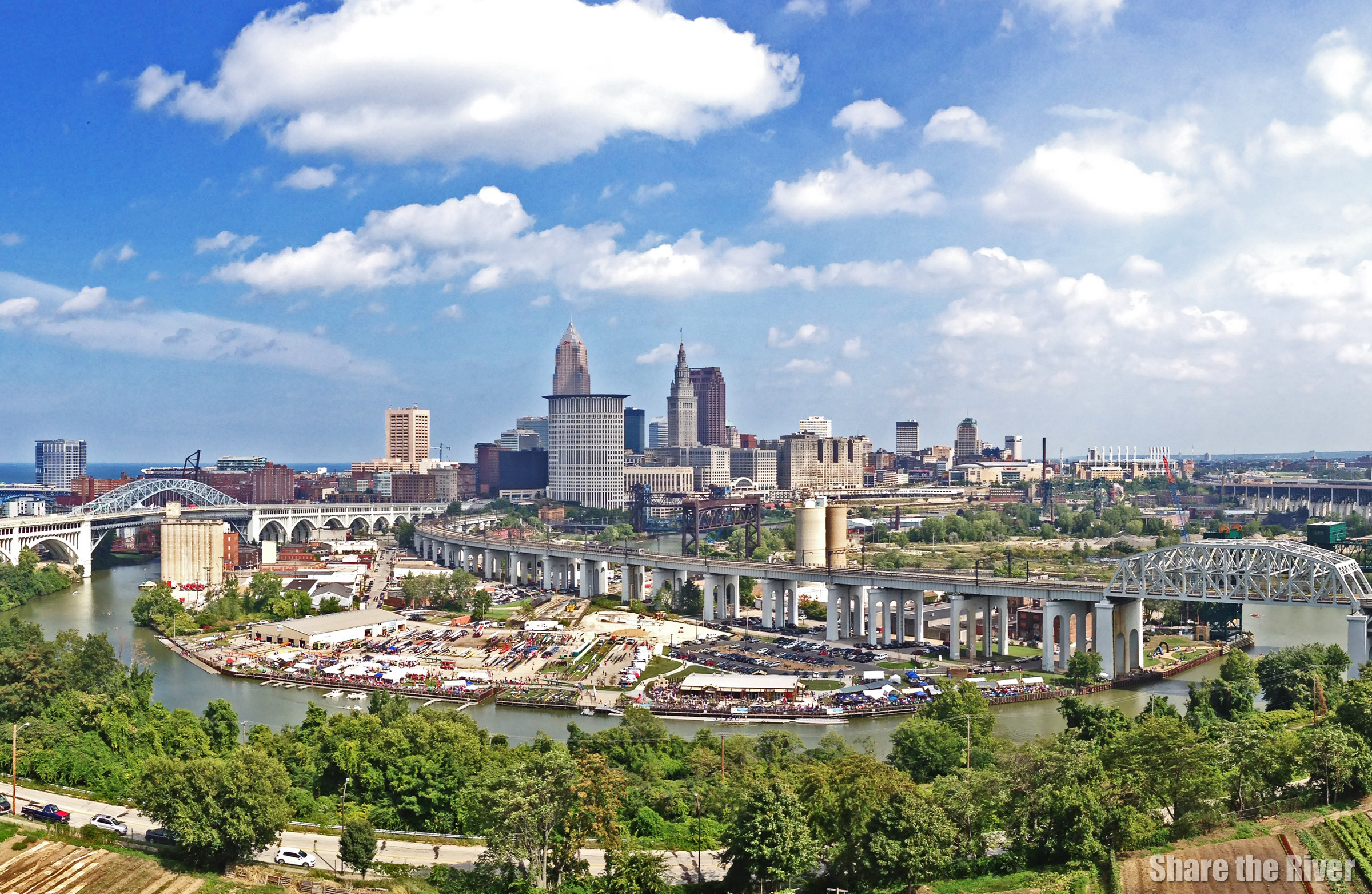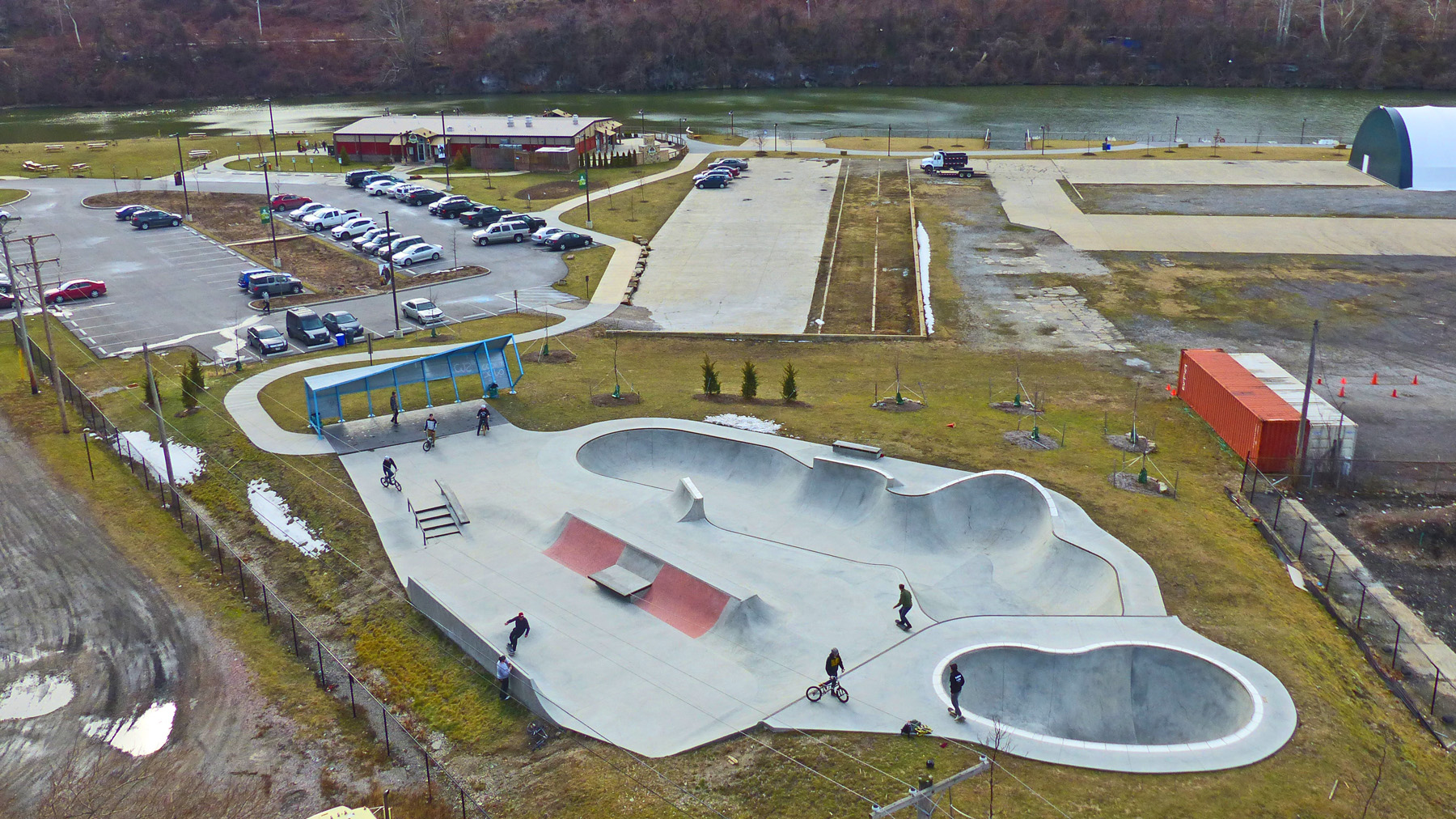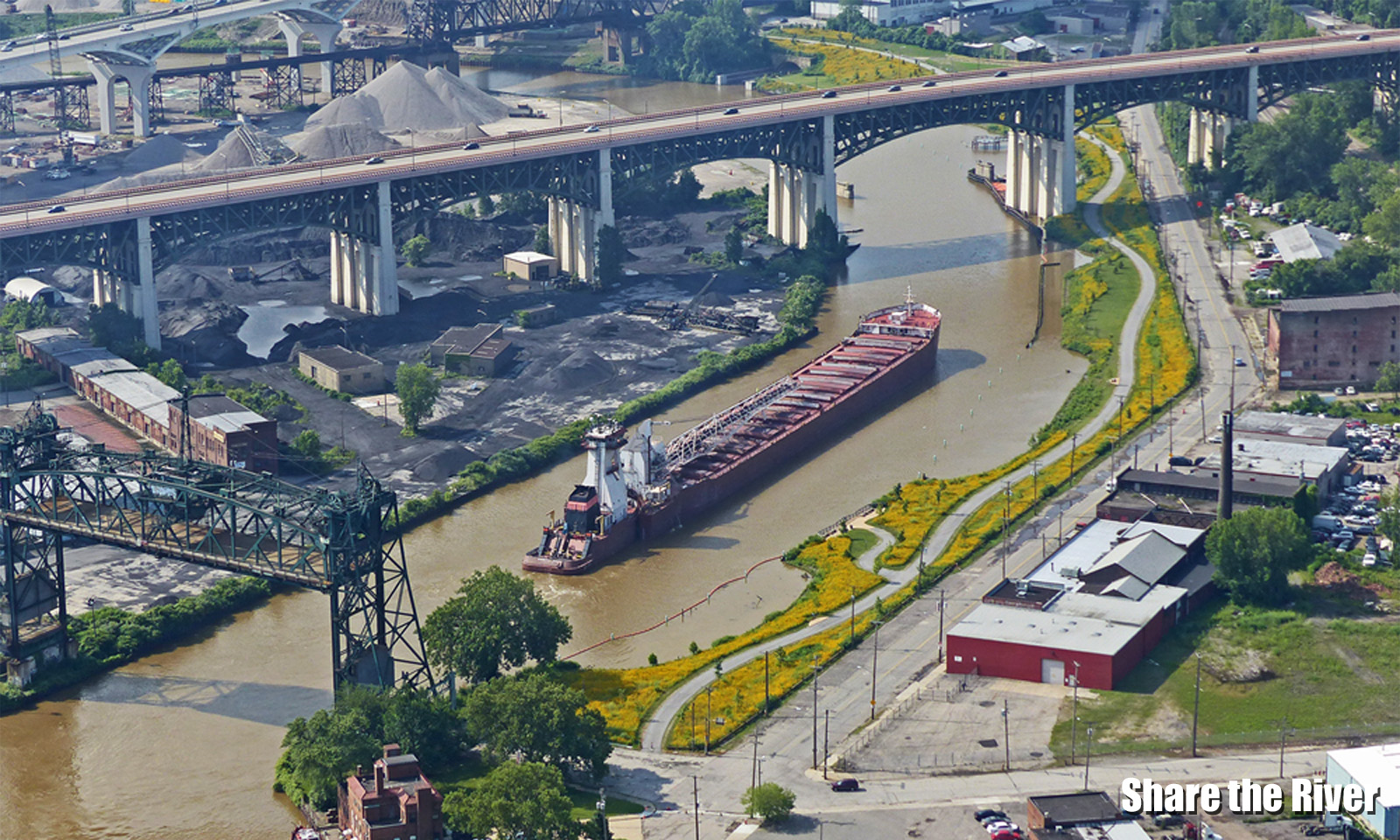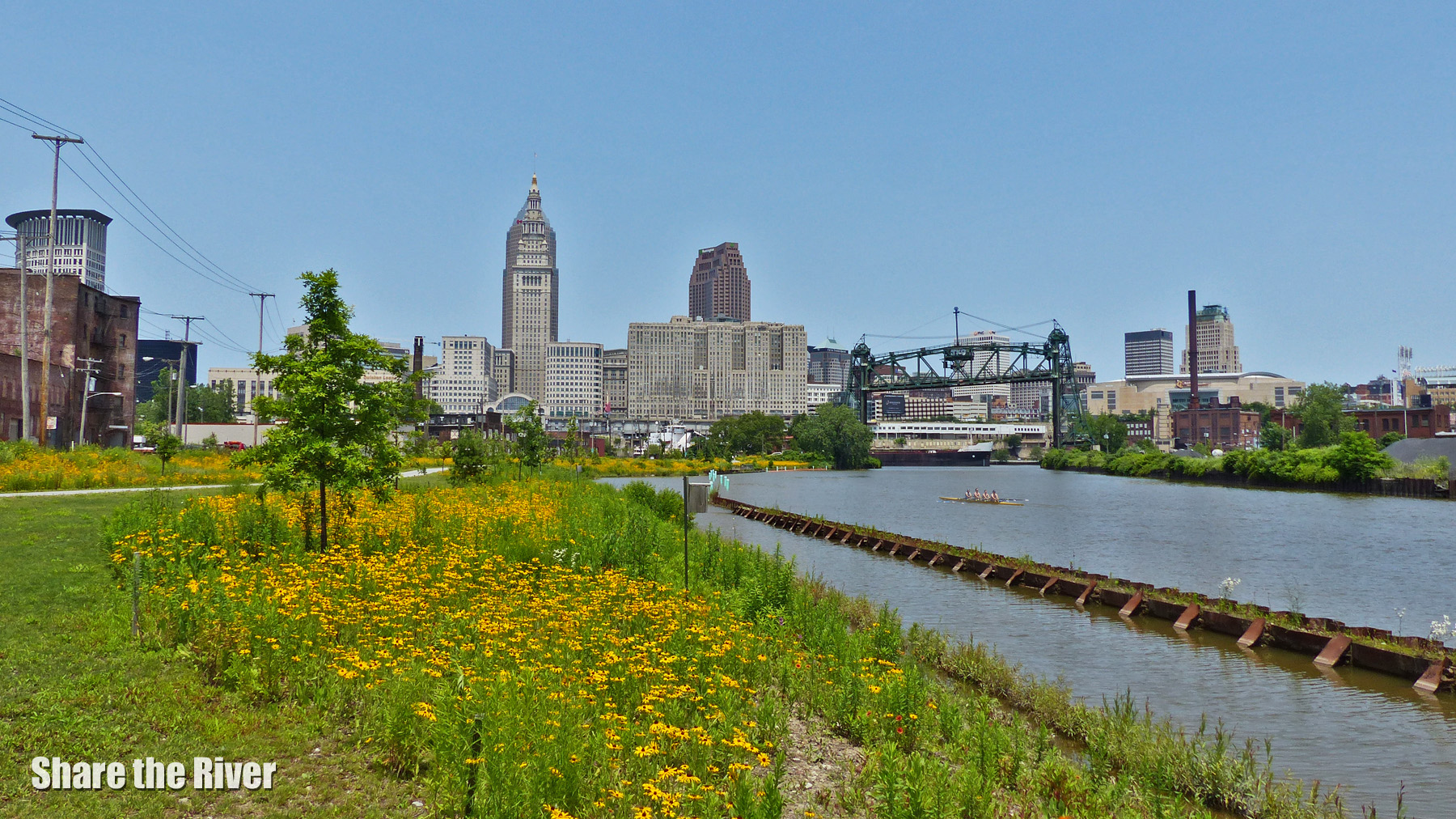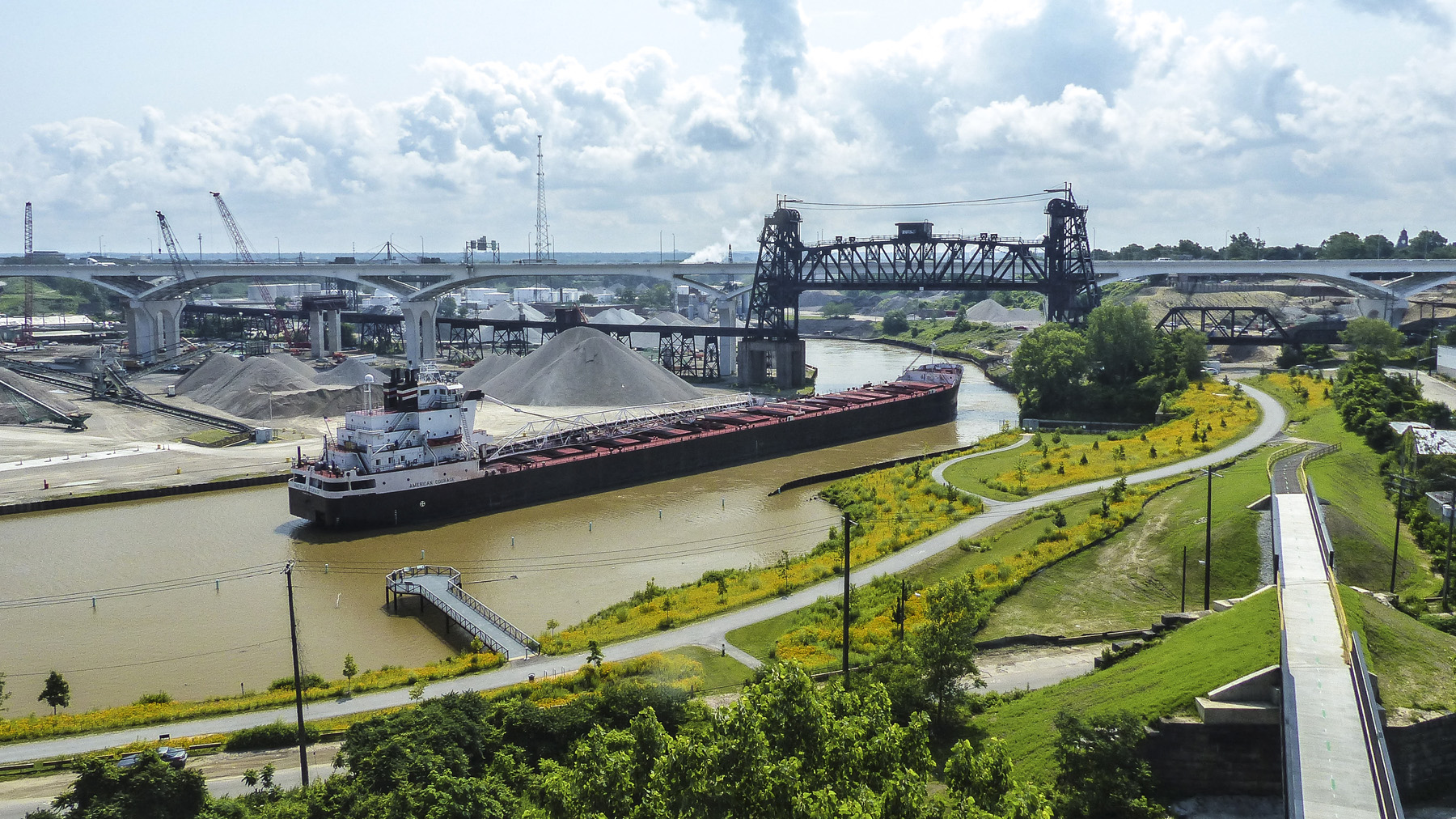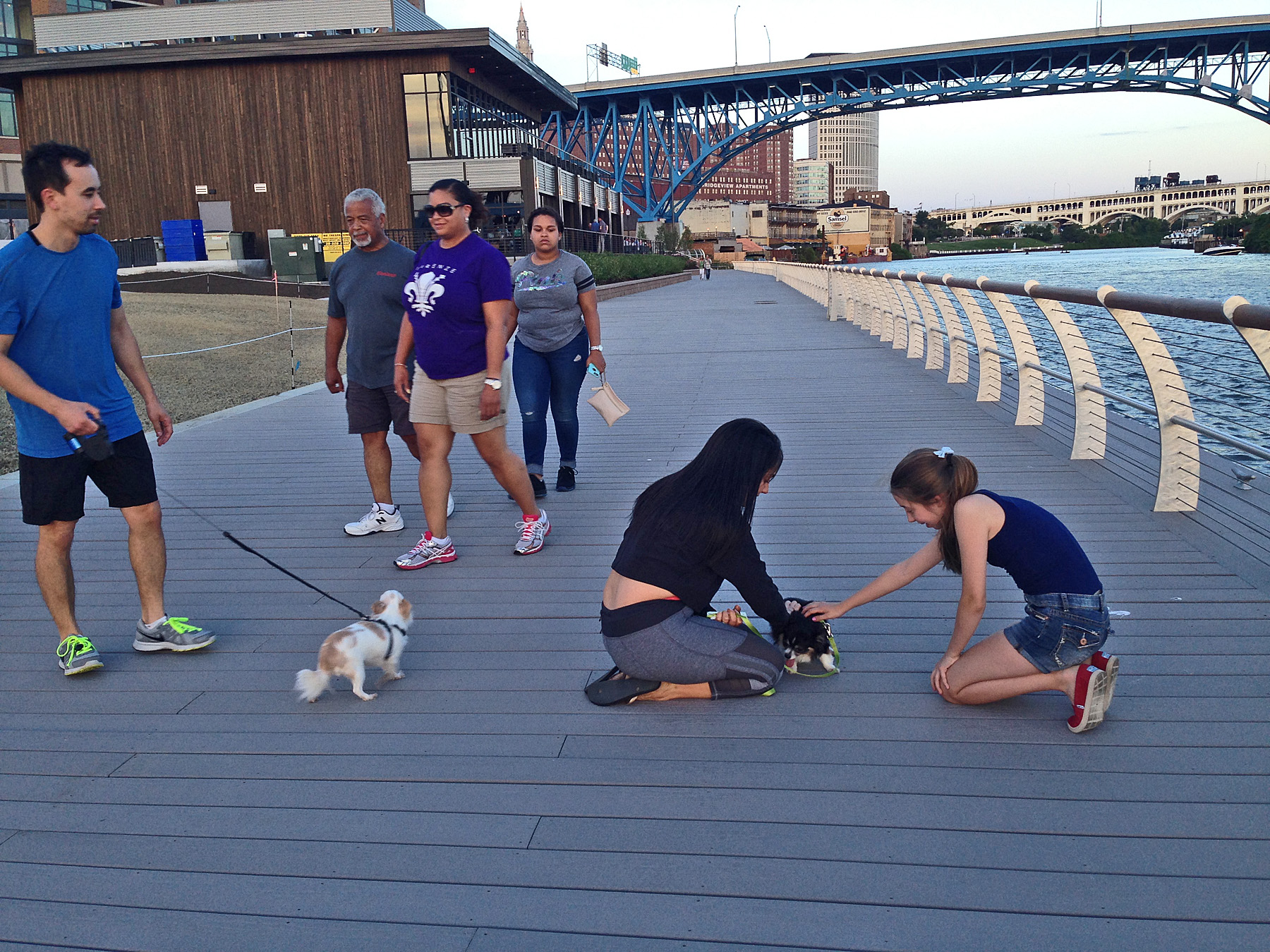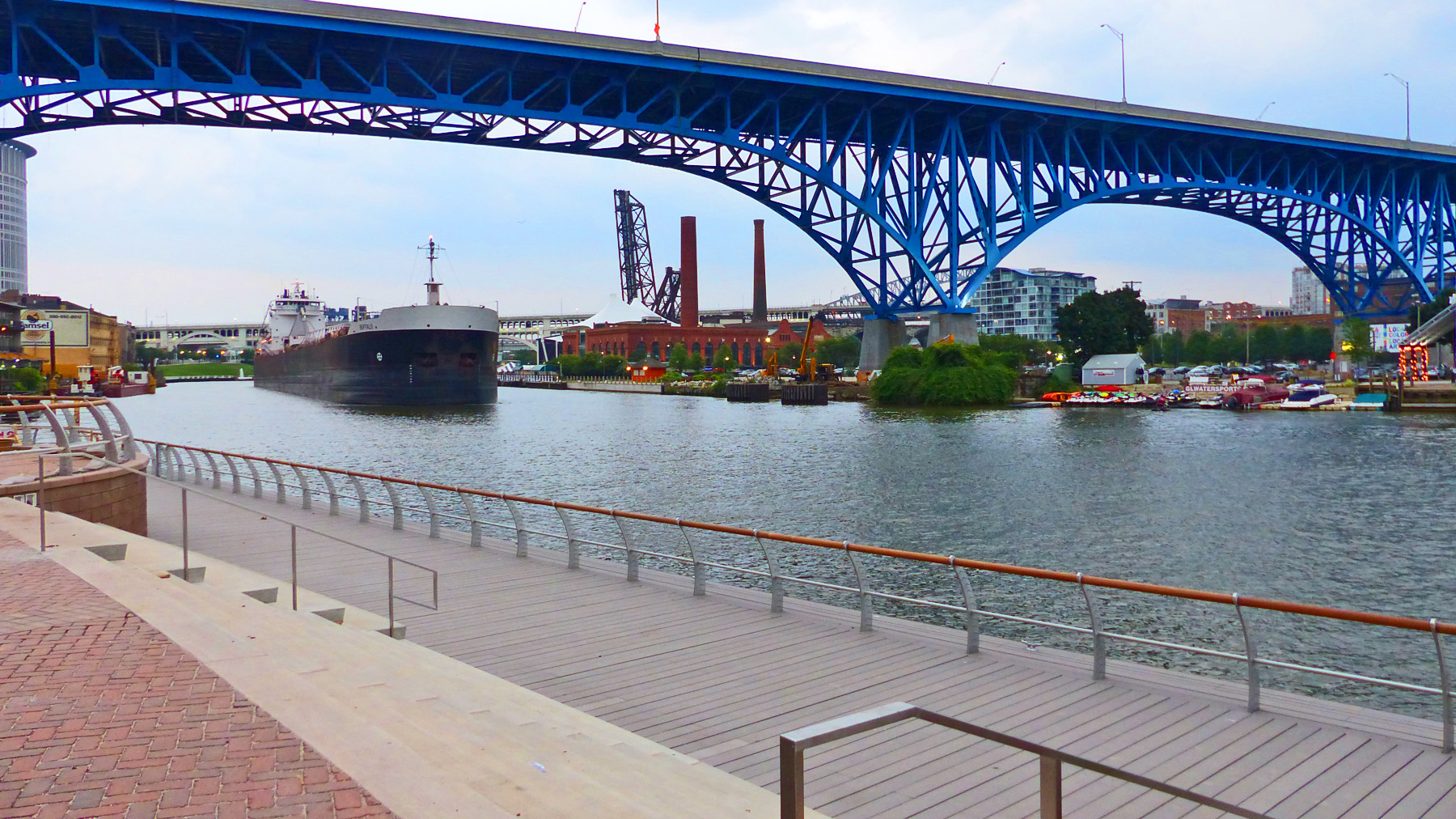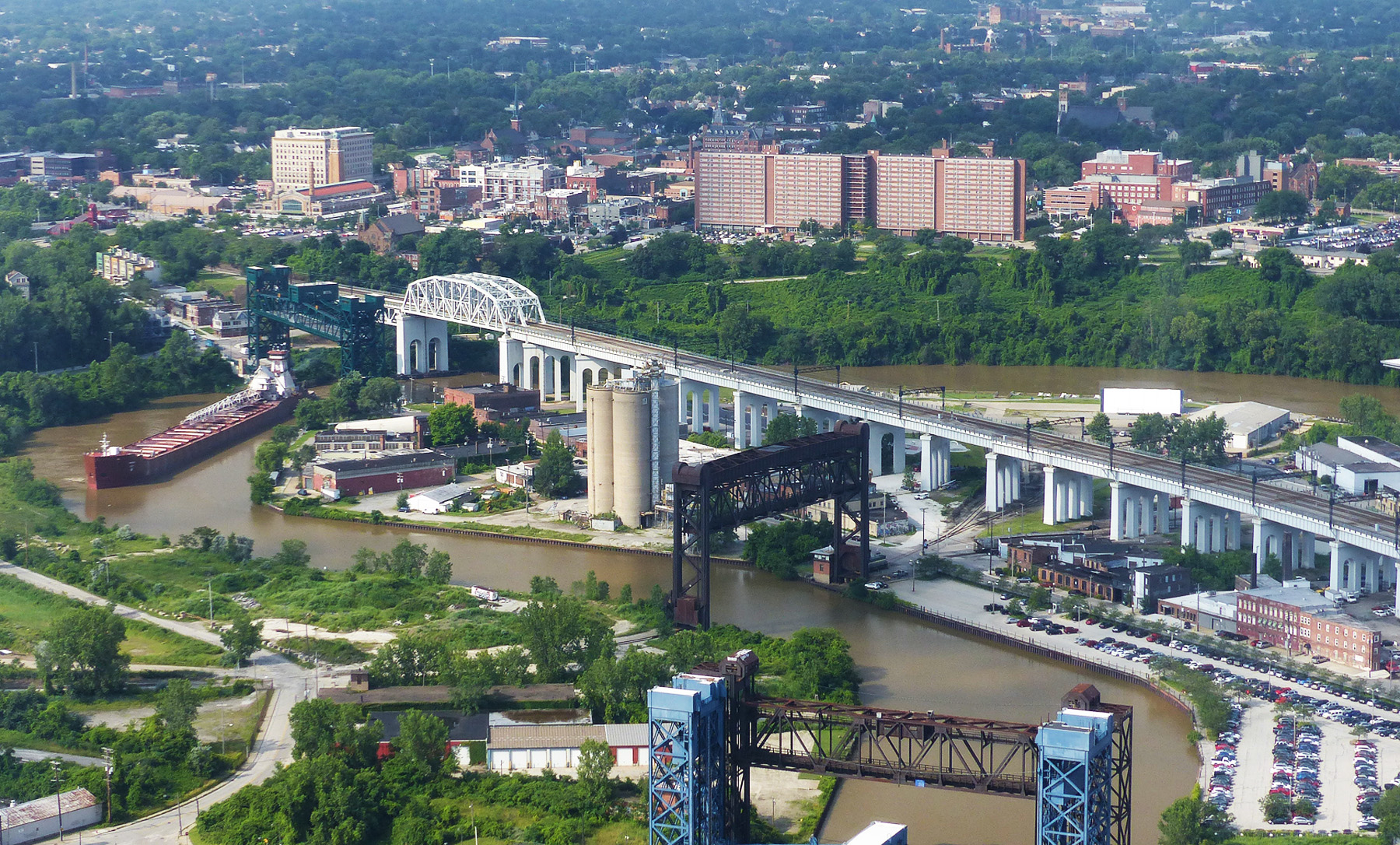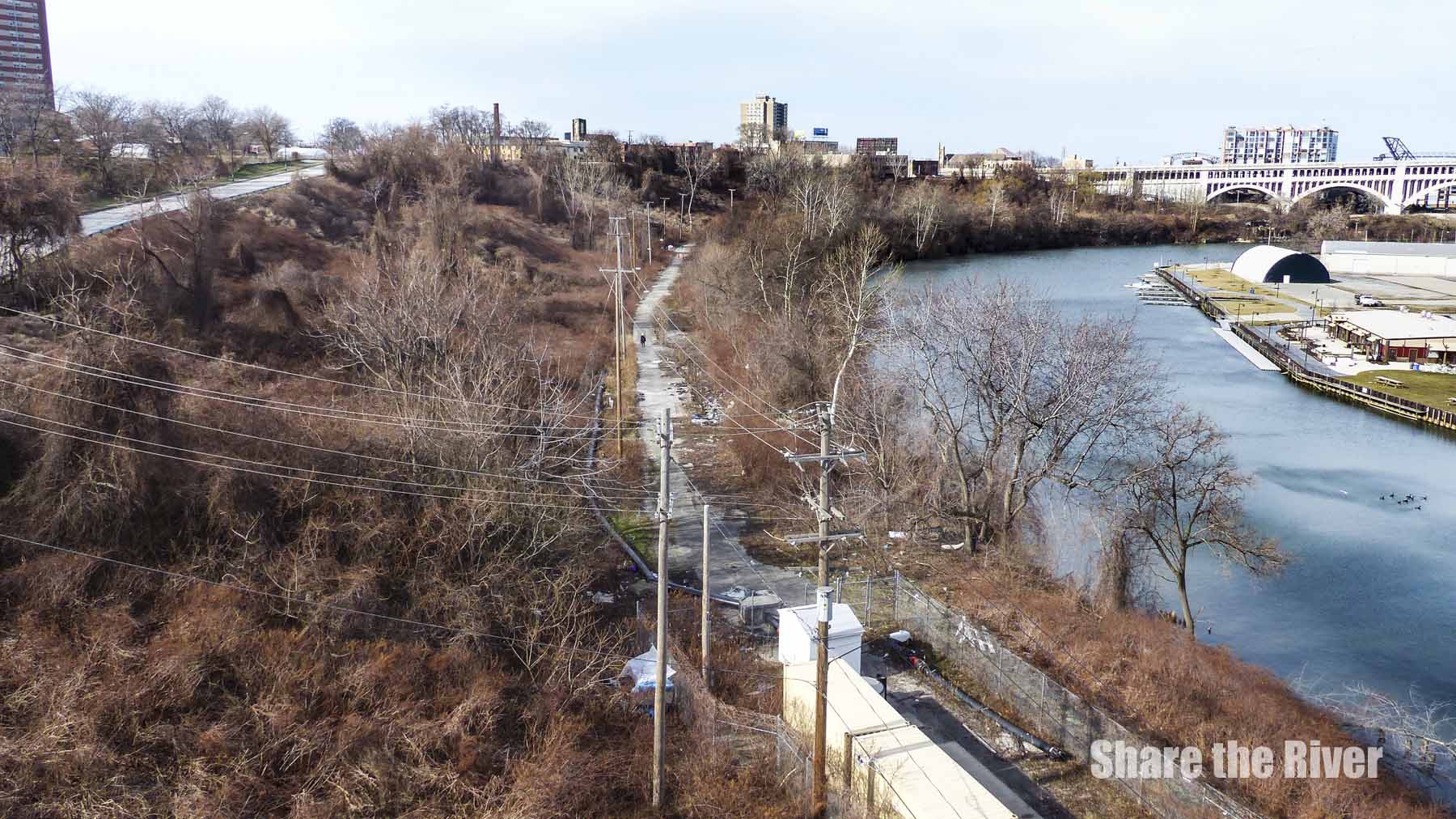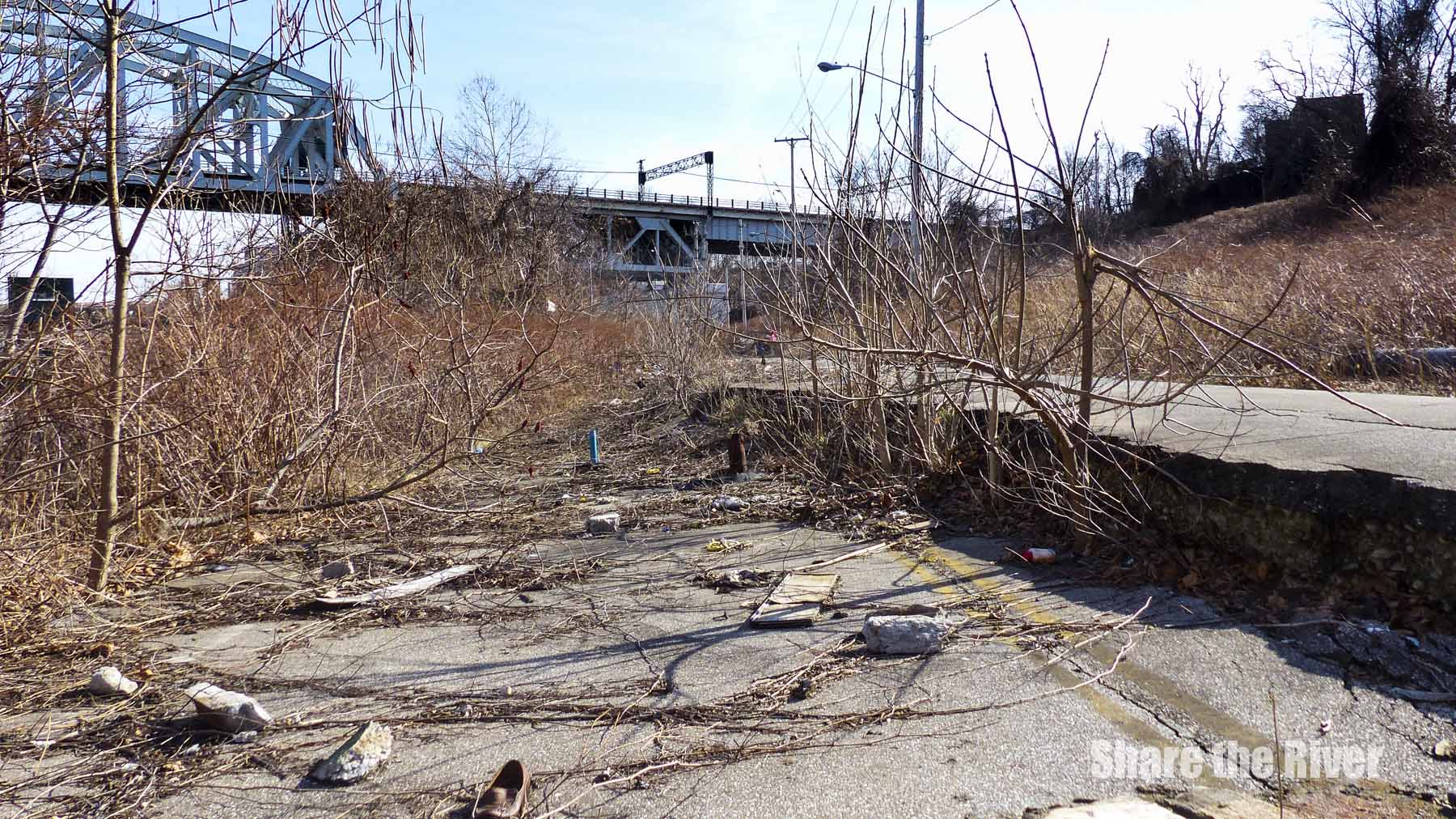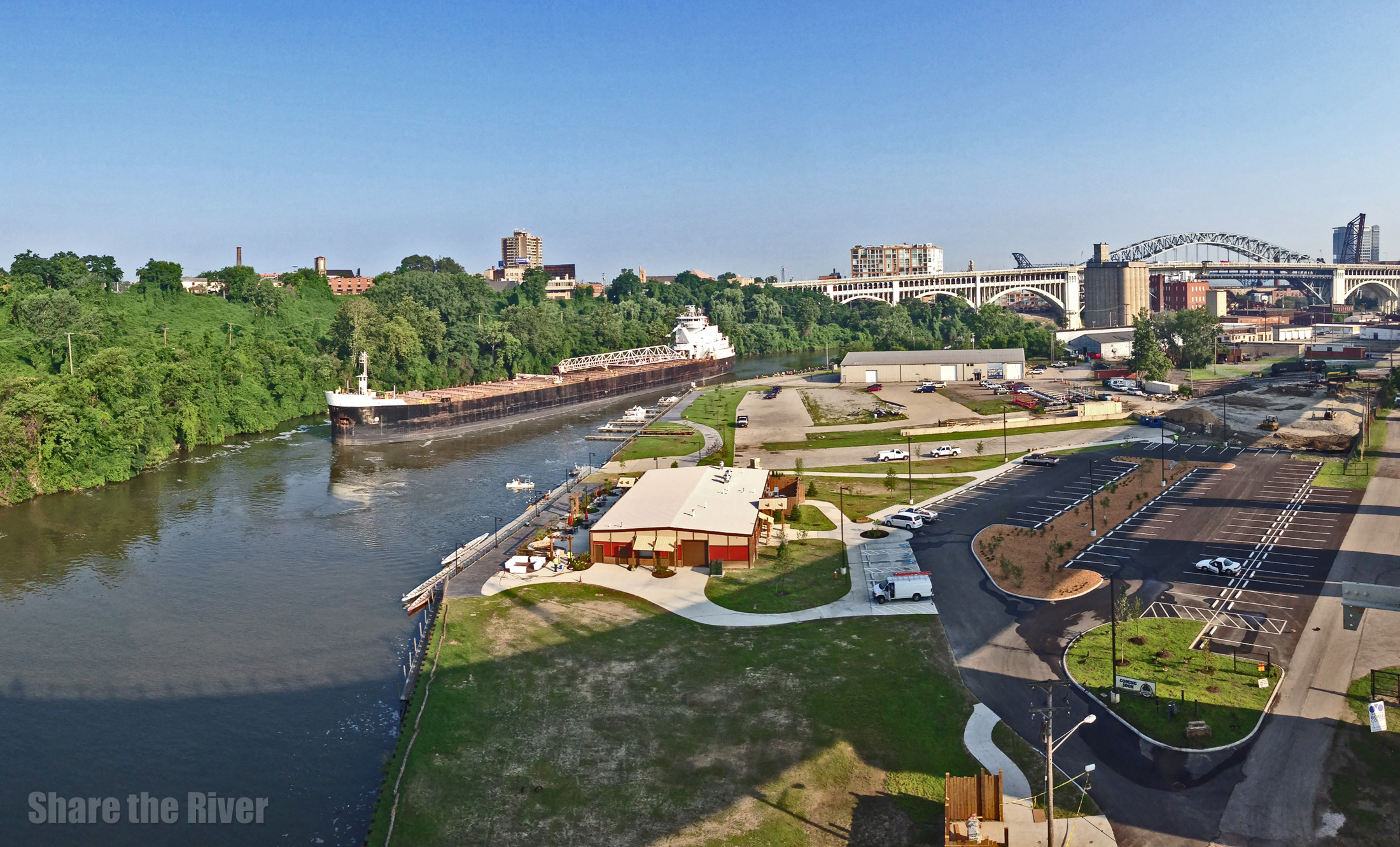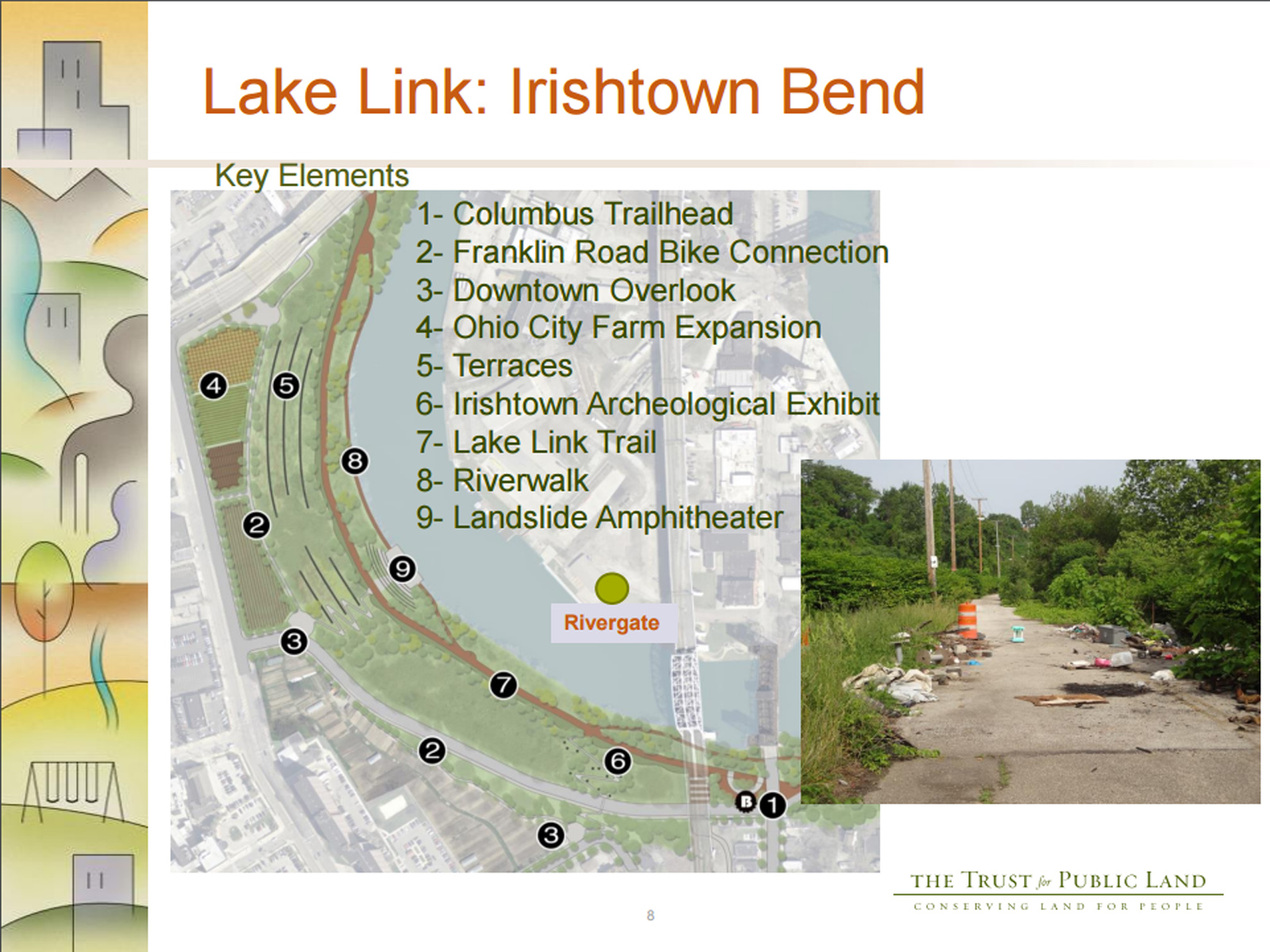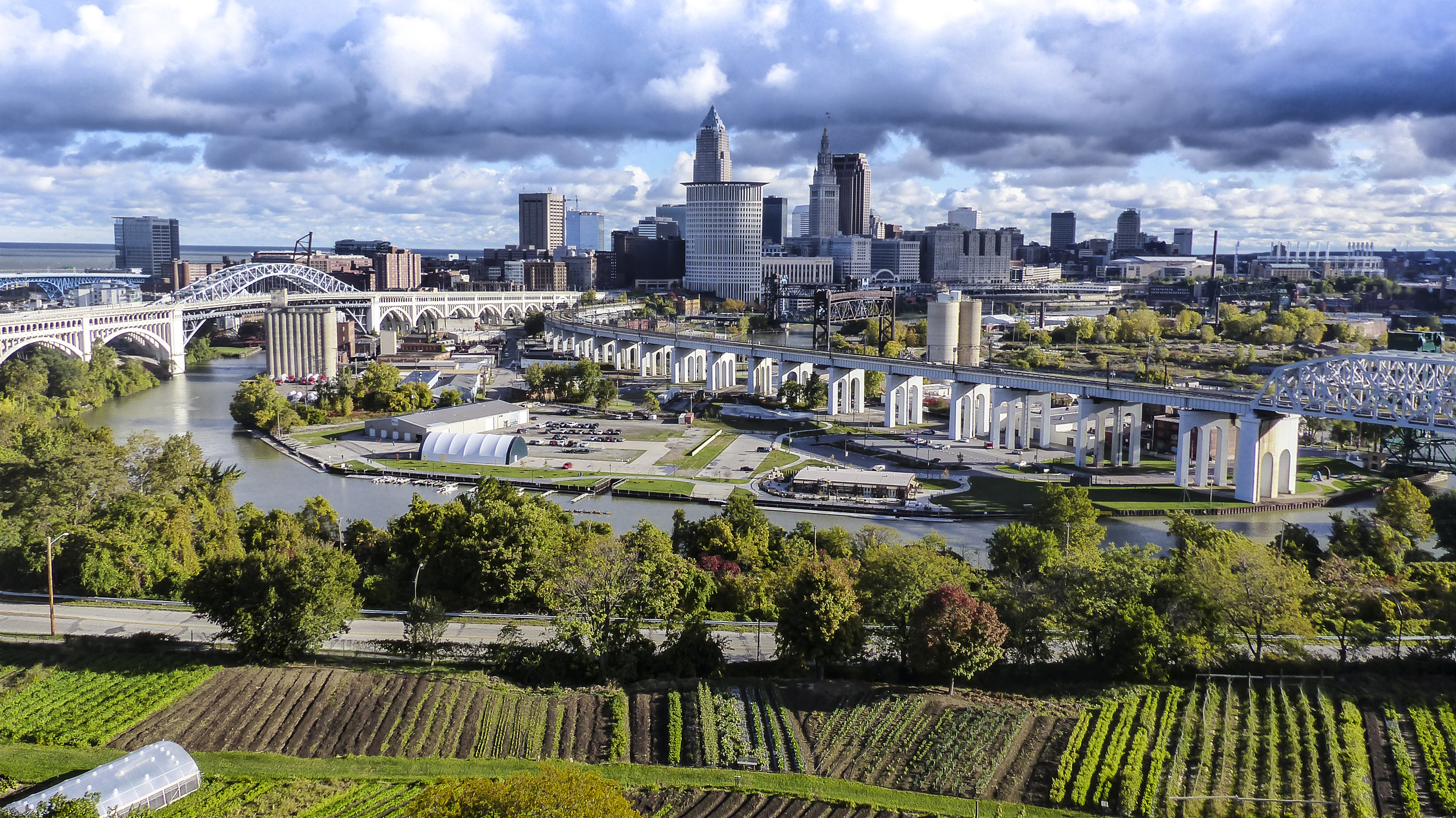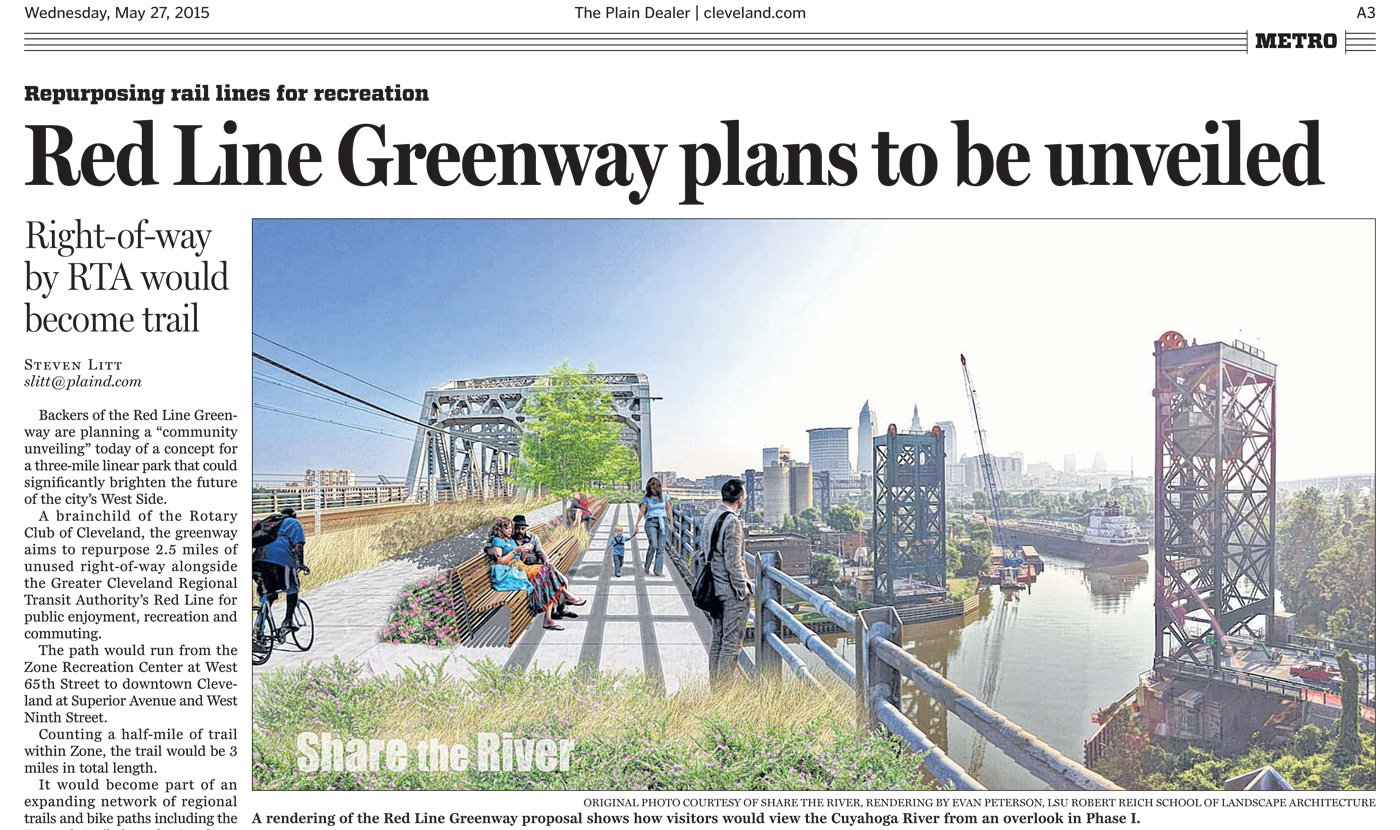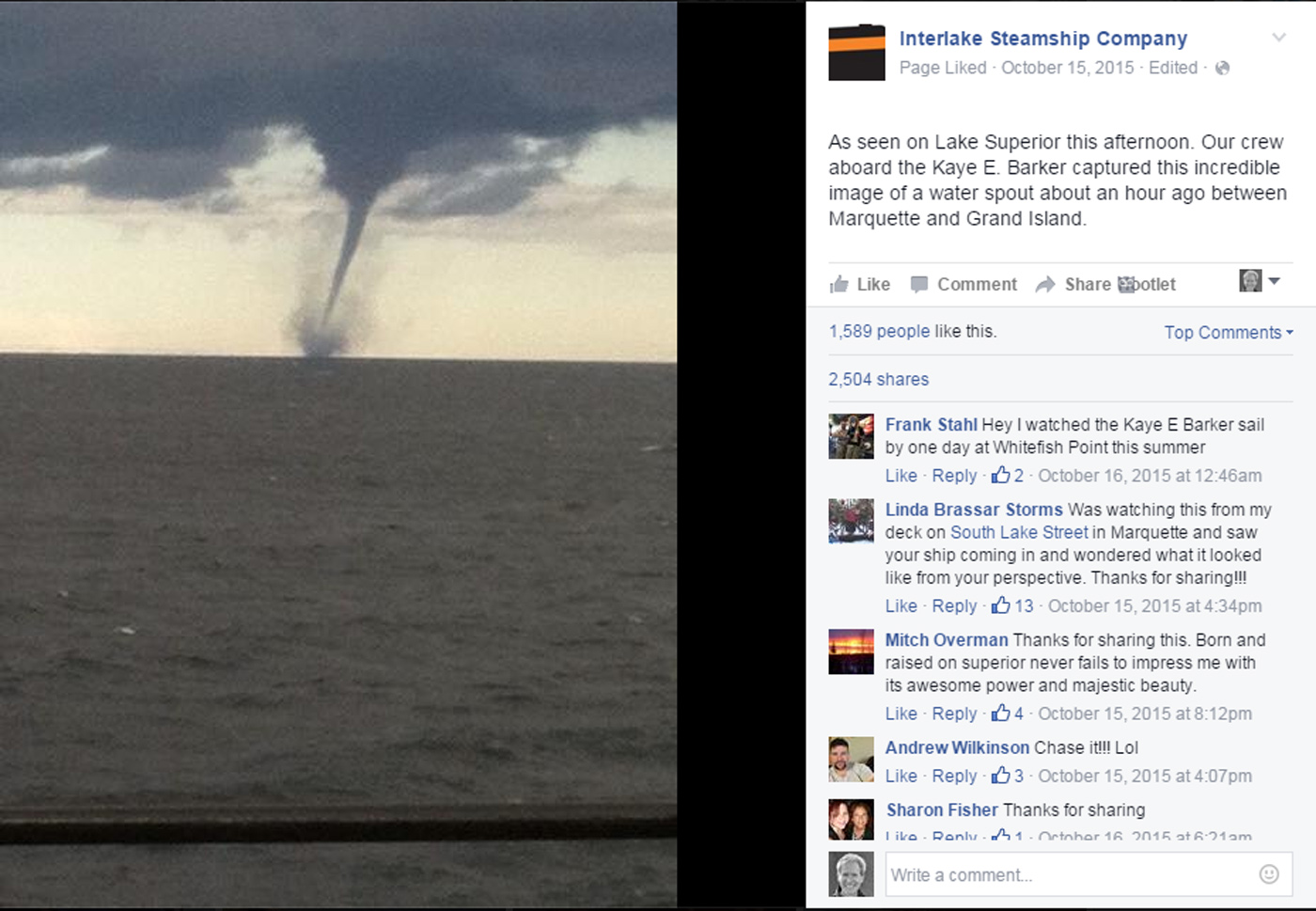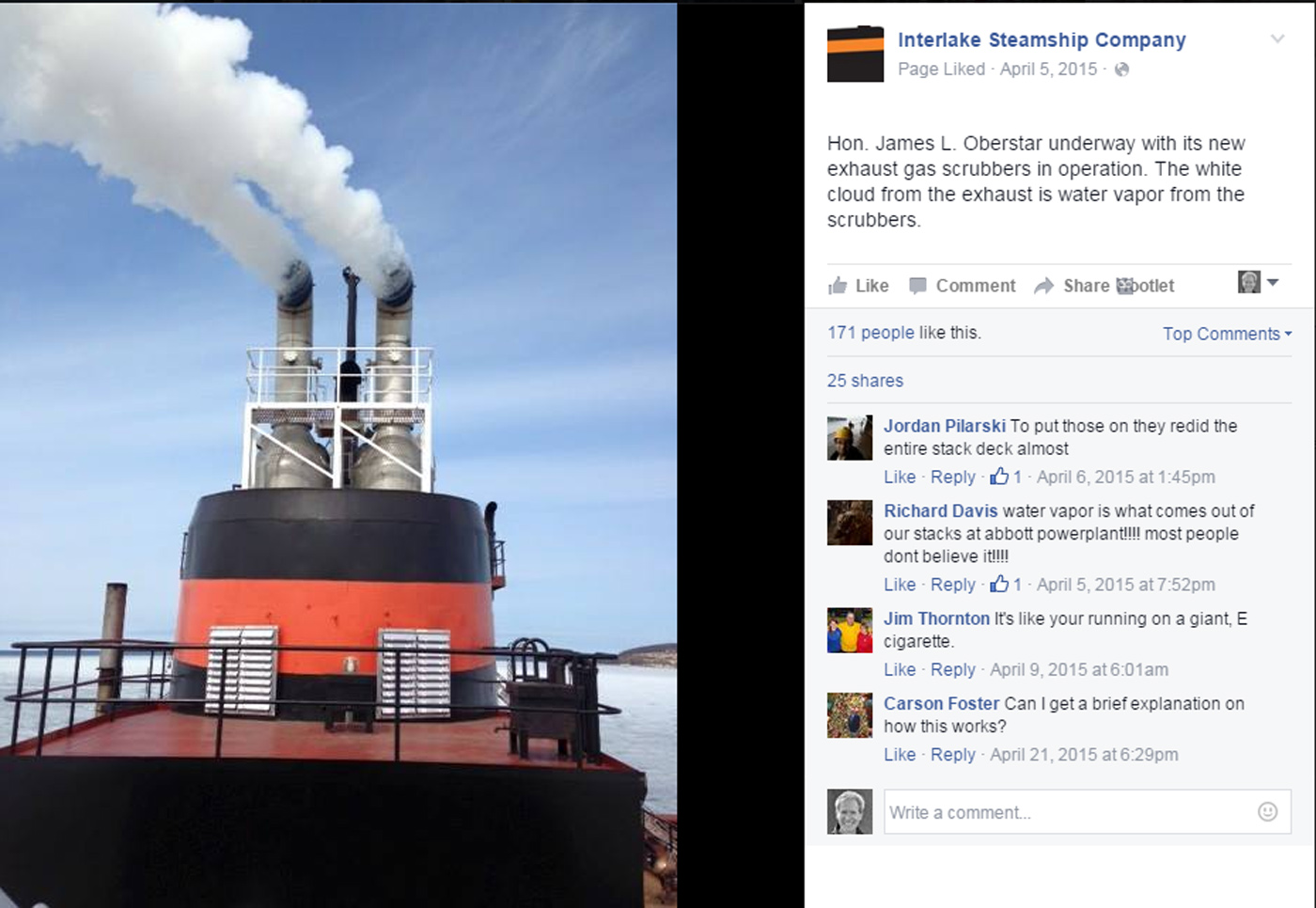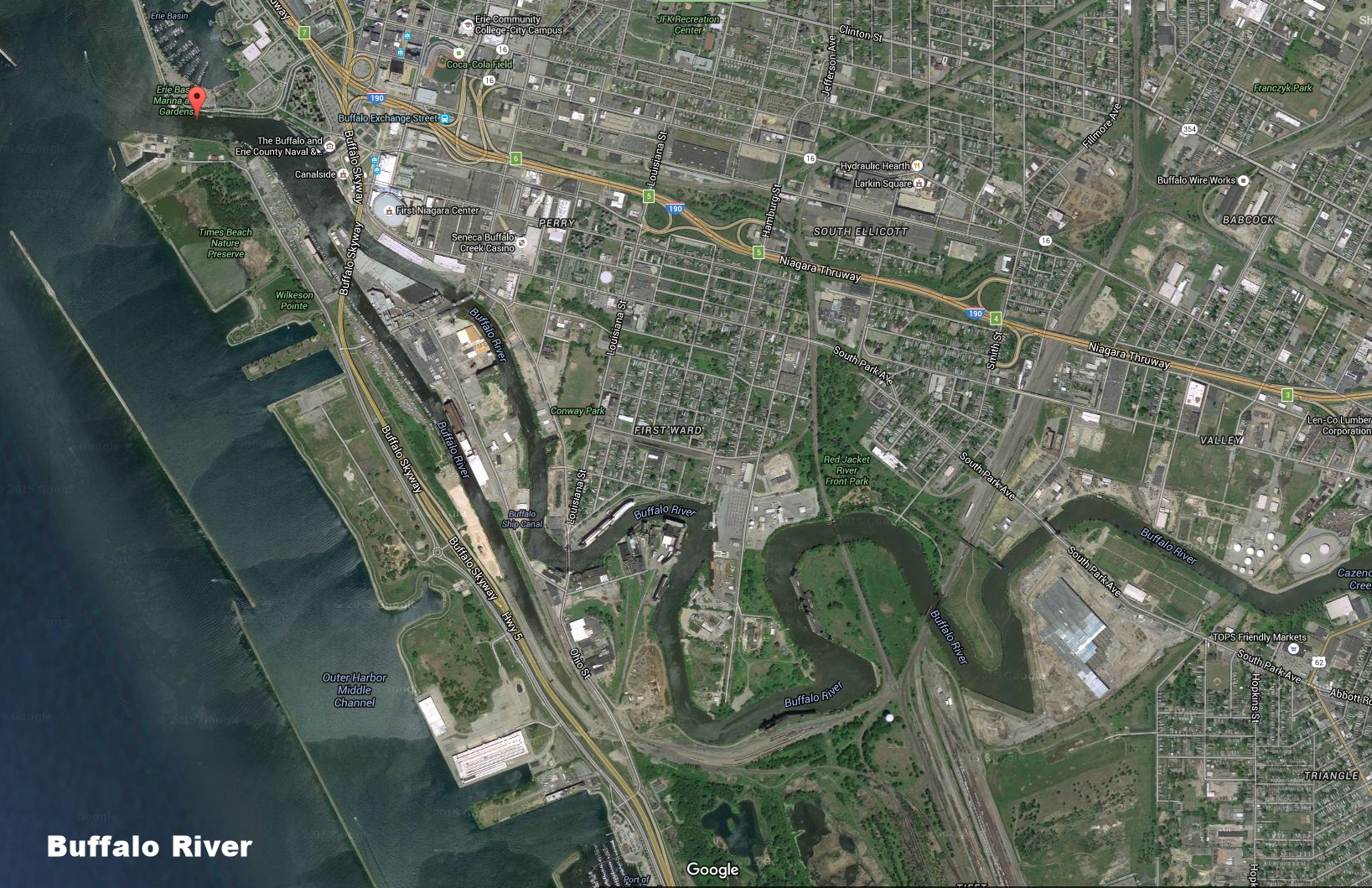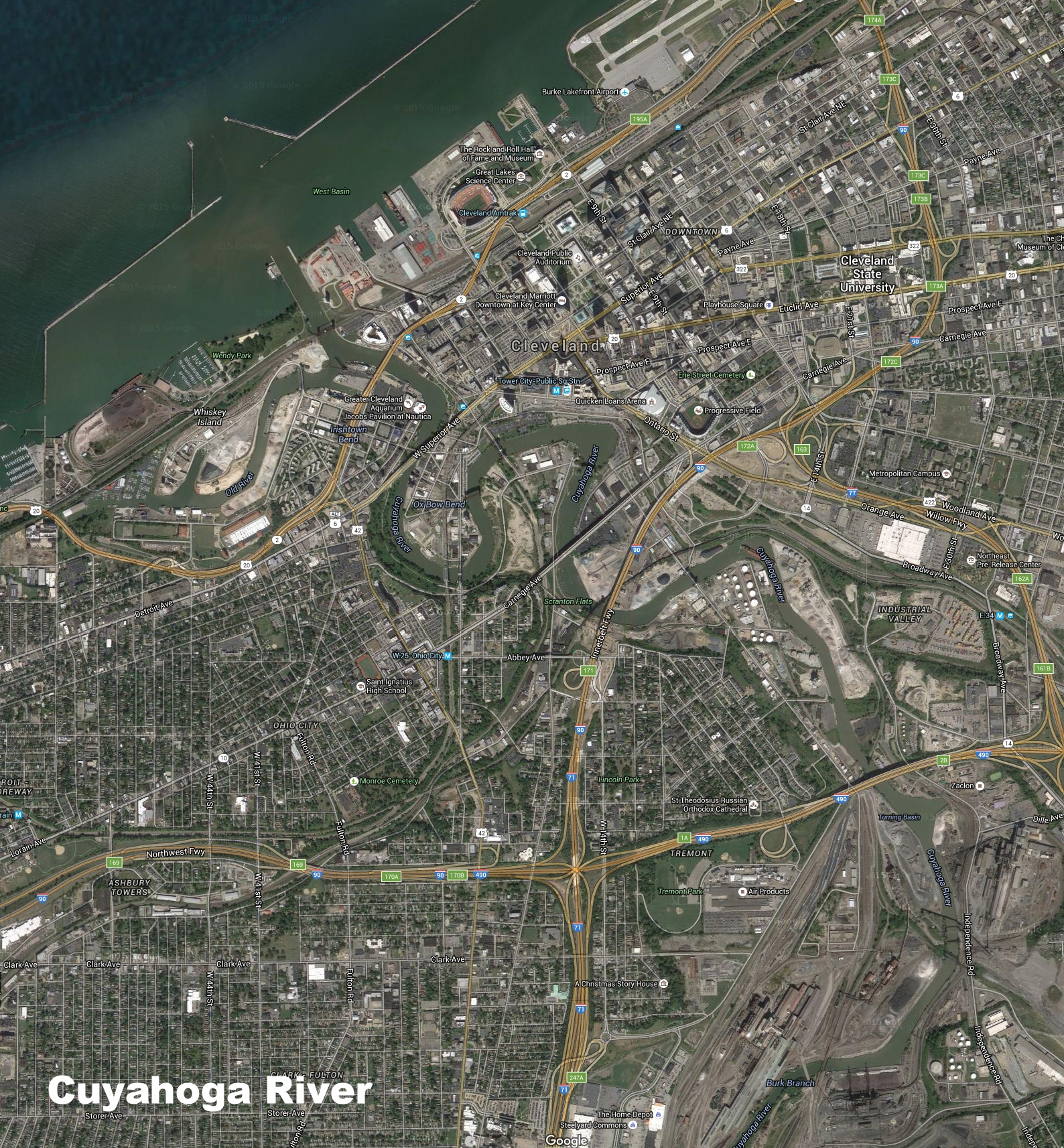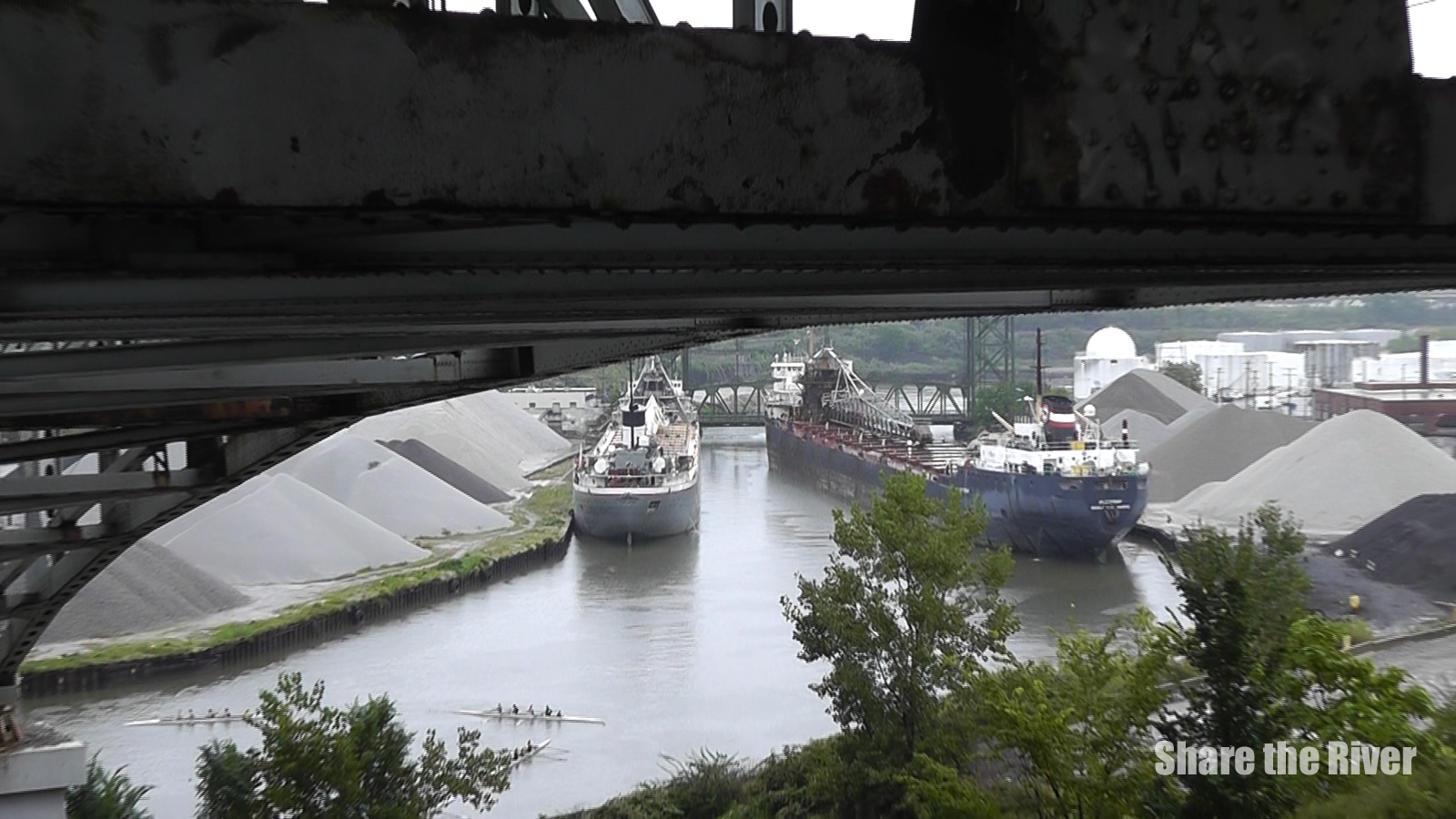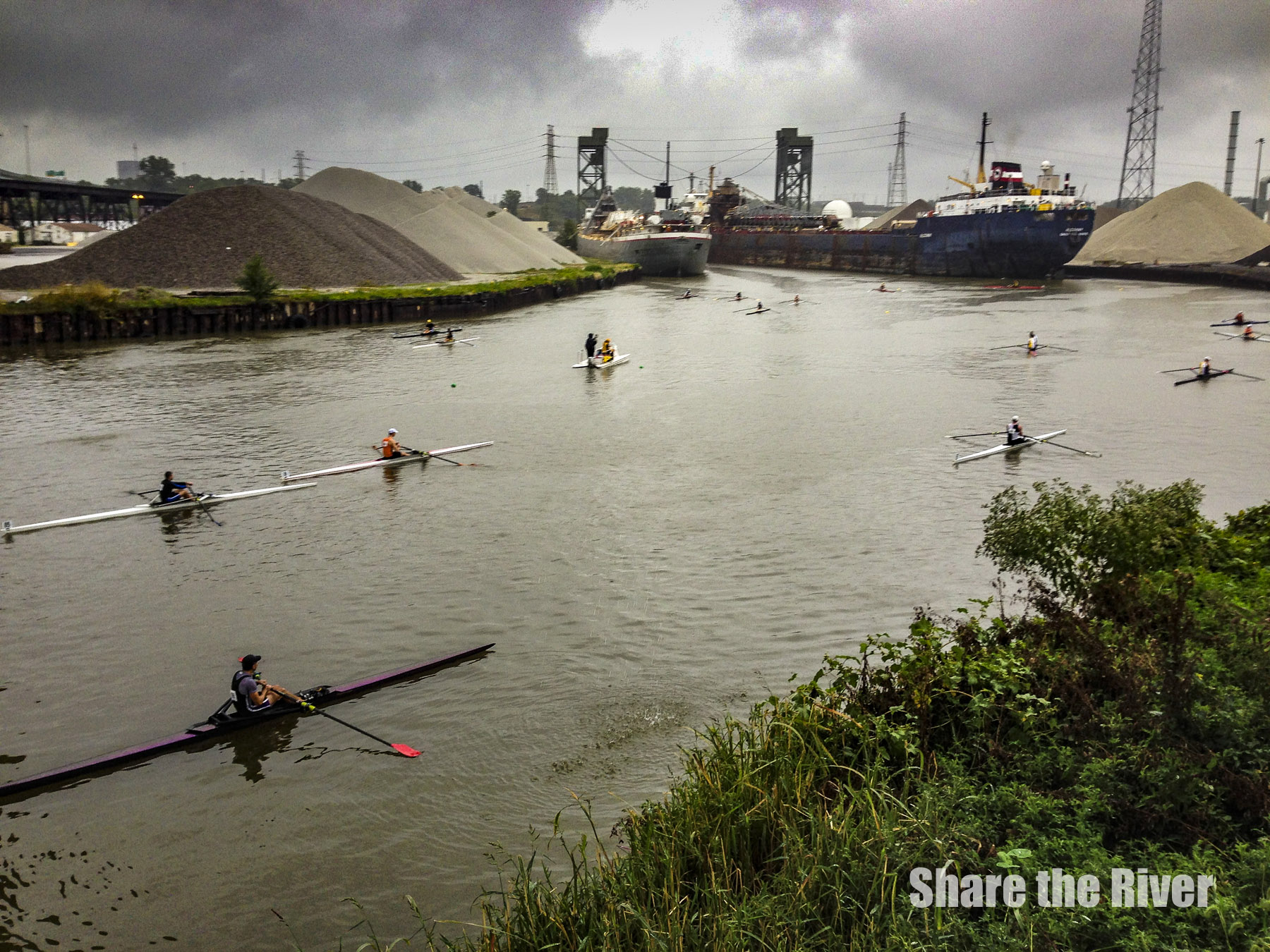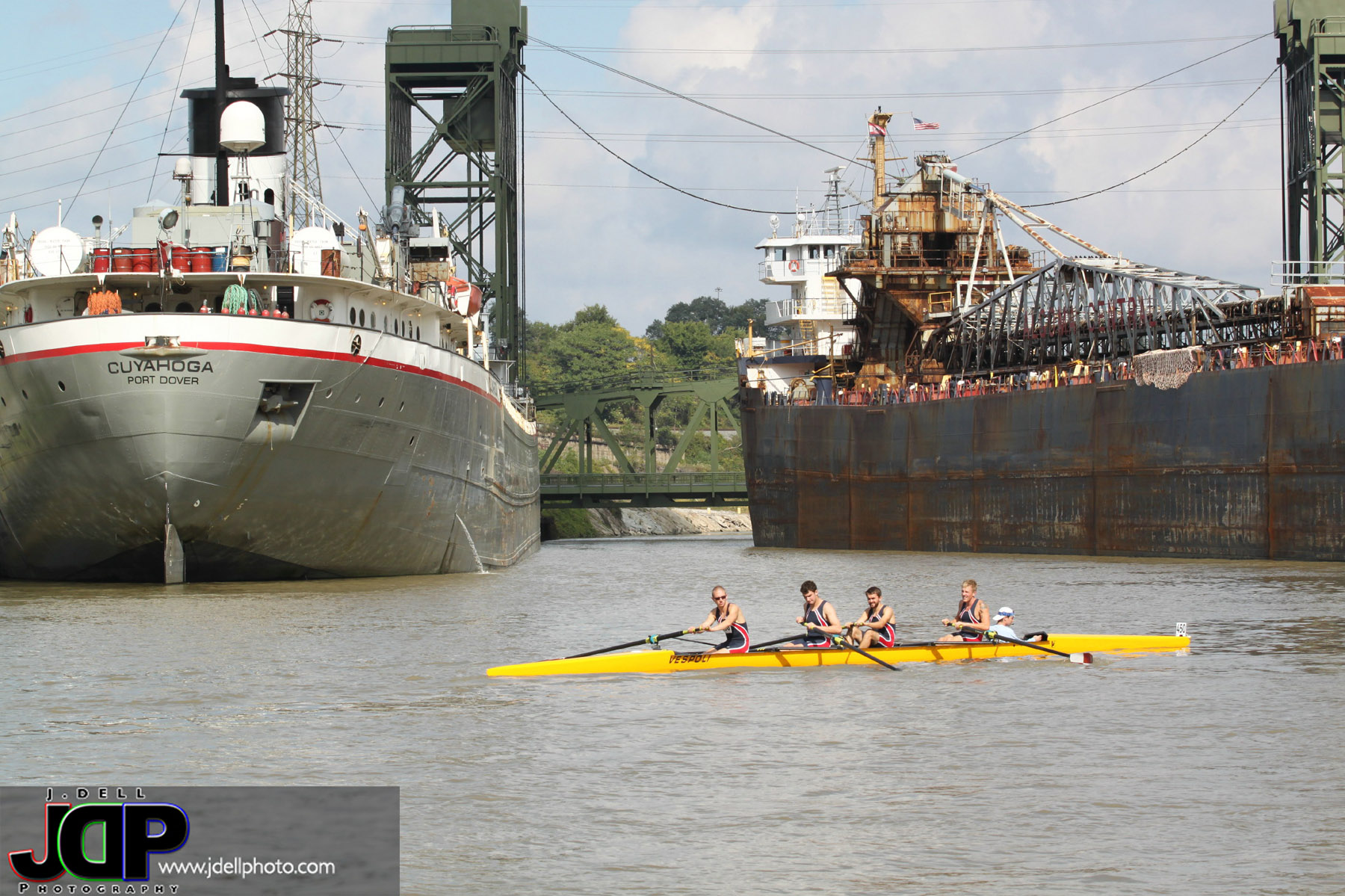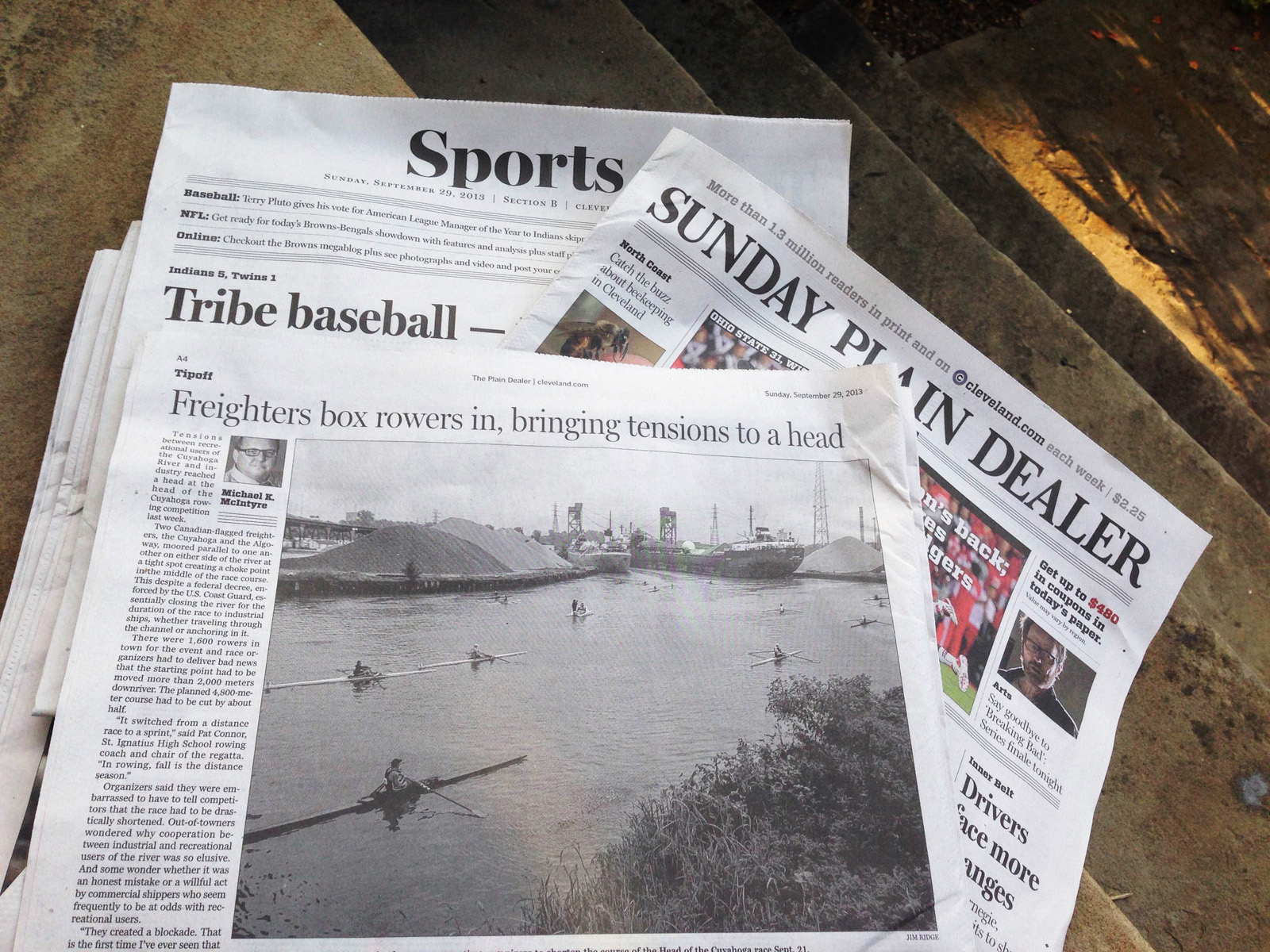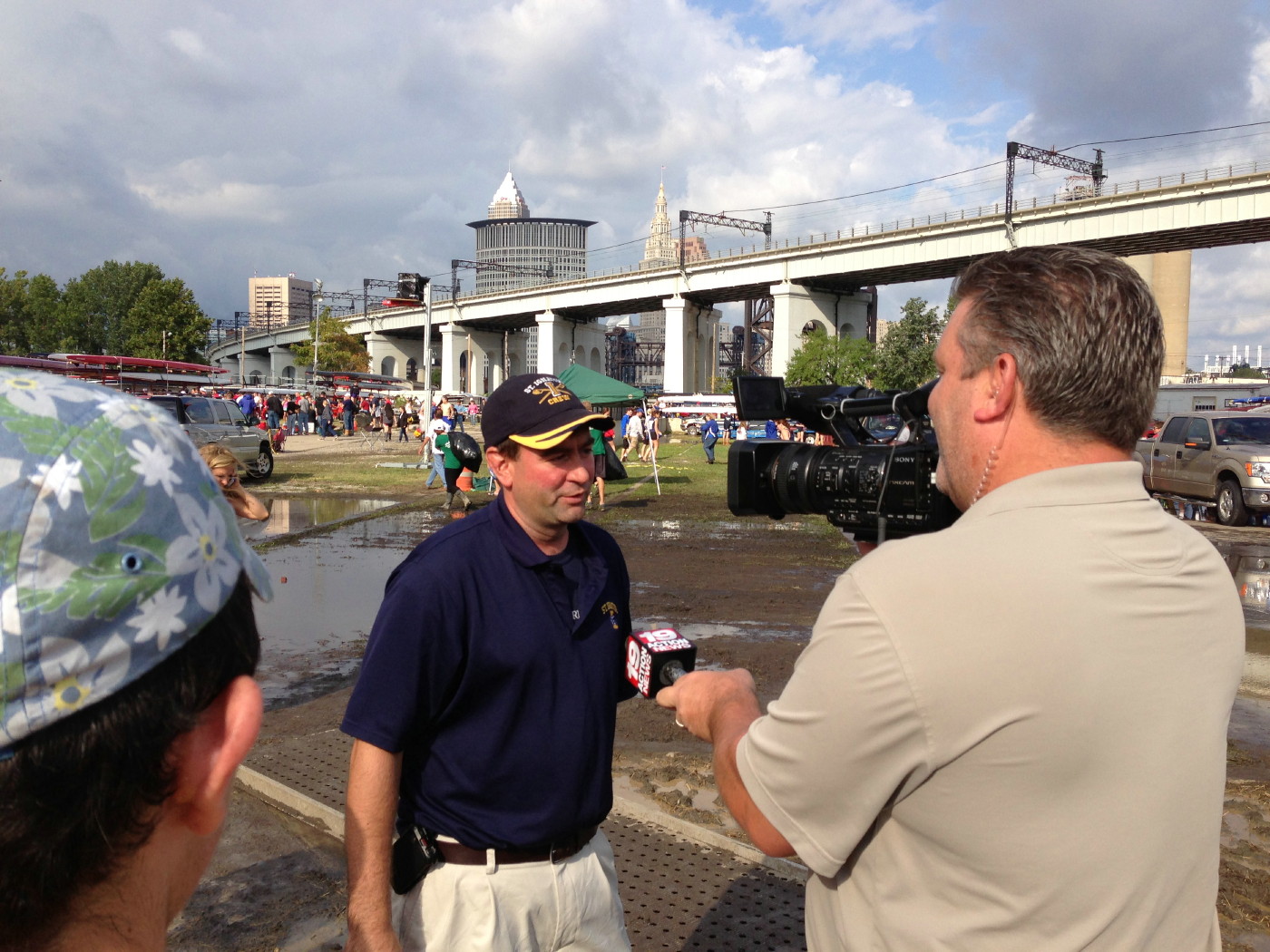Under a federal rule the Cuyahoga River (a federal navigation channel) is closed to freighter traffic from 7 am - 4 pm during the HOTC. Due to a series of miscommunications, the freighters had traveled upriver the night before, unaware of the HOTC the following day. Regatta organizers conferred with the U.S. Coast Guard and after it was determined it would take too long for the freighters to be moved, a decision was made to cut the race distance by half. Cleveland's skies eventually turned sunny and racers and spectators had a great day on the river.
As news broke about the inadvertent "blockade", someone was heard to say "this will probably get the HOTC more PR than if the freighters hadn't been there". That prognostication was on target as local media saw the promise of a story that illustrated the challenges associated with commercial and recreational stakeholders sharing the same body of water.
Plain Dealer columnist Mike McIntyre's story on the freighter kerfuffle ran on page A4 in the following Sunday's paper and many saw this event as a catalyst for substantive and fruitful conversations about the shared use of the Cuyahoga River. http://www.cleveland.com/tipoff/index.ssf/2013/09/freighters_blockade_cuyahoga_r.html
Two weeks later, the Plain Dealer's Robert L. Smith wrote an excellent piece on the "challenges" resulting from a cleaner, greener, and more popular Cuyahoga River. http://www.cleveland.com/business/index.ssf/2013/10/cleaner_greener_cuyahoga_river.html
In the two years since the freighter incident, cooperation and communication between recreational and maritime stakeholders has evolved to a point where both parties recognize the Cuyahoga's rising tide of popularity can lift all boats. And Saturday's regatta will give out-of-towners a great opportunity to see how Cleveland's re-energized waterfront is a catalyst for economic development. If you're a local, head down to the Cuyahoga River this Saturday to see it as you've never seen it before!




